
- H.J. Heinz Company in Pittsburgh
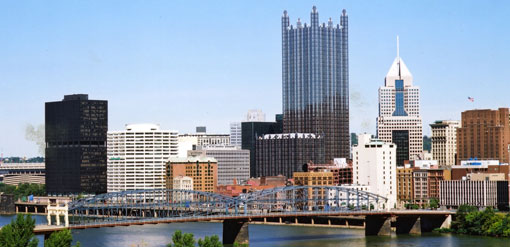

A Pair of Pittsburgh Renaissances
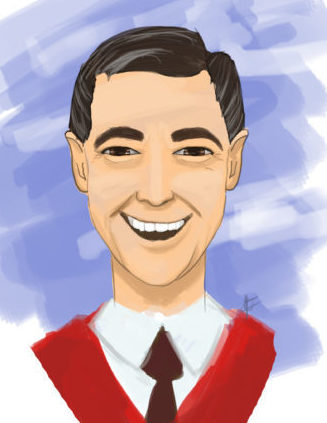
Mr. Rogers: Pittsburgh’s Beloved Neighbor
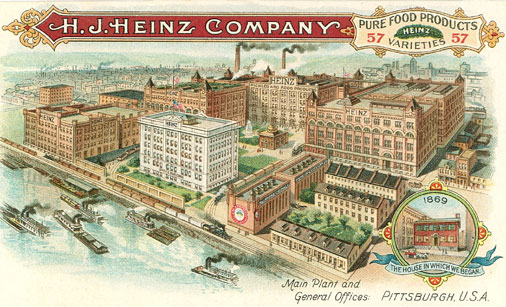
In 1899 Heinz invented the “factory tour” himself. This allowed people to watch the process of making his products. This turned out to be a brilliant publicity move. It was so successful that other companies started to do the same thing once they saw the public’s reaction. Each tour took the visitors past the can making department to the soup filling machines to the pickle bottling tables. At the end of the tour the visitors were given samples of Heinz products to take home as well as a pickle pin. In 1972 much of the processing became automated. This caused the tours to discontinue as the automation made it so there was little that the visitors could see.
Good Character and Fair Treatment
One of Henry’s favorite sayings was, “Make all you can honestly; save all you can prudently; give all you can wisely.” He would place inspirational advice throughout the factory. Heinz wanted to provide the public with tasty products at a reasonable price. It was a principle he never deviated from. He was careful to live by his mottos.
In the sales room, “the ruling principle of our business must be to secure the permanent satisfaction of the consumer and the full confidence of the trade,” was framed and on display. Heinz did not quote prices or sales figures to his salesmen. He focused on character. He once said, “Rather a man with 50 percent ability and 100 percent character than a man with 100 percent ability and 50 percent character.”
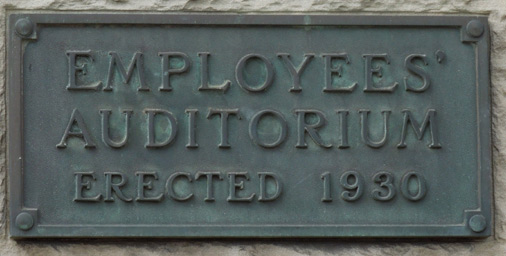
Henry was loved and respected by those who worked for him. He knew many of the employees by name. He would try to make new employees feel right at home. At Christmas time he remembered each of his employees. He would visit the sick himself or send someone in his place. New parents would receive a little silver spoon from him when they had a new child. If someone was having financial difficulty, it was not uncommon for him to quietly find a way to alleviate that stress. He kept a company doctor, nurse and dentist for employees to visit free of charge. Once when he returned from an overseas trip, he was greeted by hundreds of American flags being waved from the windows of the factory as his car drove up to the plant.
Heinz’s employees felt the same level of fondness and appreciation for him. Henry viewed his factory and employees not as a large web of machines and workers but as a large and happy family. He worked hard to retain the employees he had. In turn his workers work hard for him. Any disputes were settled in a positive way. Other companies in Pittsburgh were known for their strikes and union activity, which sometimes turned violent. There was never a time when his employees went on strike during his lifetime.
Henry didn’t just treat his employees fairly, he tried to be fair in his business dealings as well. He learned at a young age from his parents to be thrifty and not greedy. Being raised to not be wasteful with materials, opportunities or time was helpful to his success. He felt that every profit should be fairly earned. One of his famous mottos that is still used by the Heinz company today is “Deal with the seller so justly that he will want to see to you again.”
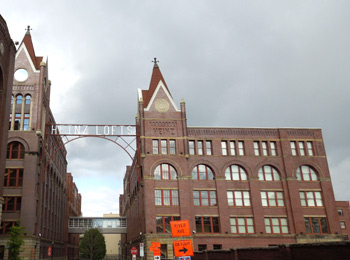
Heinz saw a need to have fresh produce from which to make his products. He began to grow produce on company fields. It also purchased produce from independent farmers. The greenhouses Heinz had were also used for growing experimental crops and developing new seeds.
Restoring Public Trust
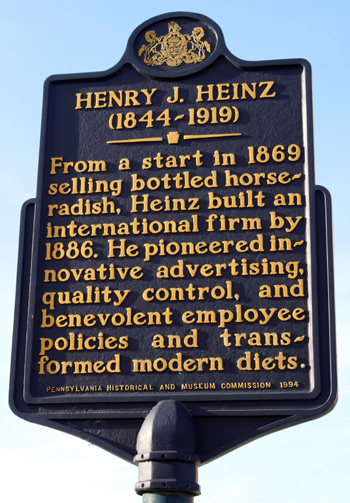
He offered his support to Dr. Wiley and President Roosevelt in their quest to clean up the food manufacturing industry. In addition to that, in 1900 Heinz added a chemistry lab that was staffed with “food technologists” (bacteriologists, microscopists and other scientists). It worked to improve the flavor, appearance and nutrition of the Heinz food products. Quality control was a high priority. It insured that high-quality produce was used in the products. Additionally it secured that the recipes and procedures in preparing the foods were consistent. The cleanliness of the food preparation process was required to be top notch. This all assured that the finished products always looked and tasted the same.
By Diane Gliozzi
Related posts

The Campus Laboratory School of Carlow University

Holiday Shopping in Pittsburgh

Christmas Movie Musts
Comments are closed.
Username or email *
Password *
Remember me Login
Lost your password?
Create an account?
- Visitor Center
- Free Things to Do
- Tours & Sightseeing
- Outdoor Adventure
- Arts & Culture
- Health & Wellness
- Pittsburgh Sports Teams
- Casinos & Gaming
- Film Festivals
- Submit Your Event
- This Week in Pittsburgh
- Annual Events
- Holiday Events
- Halloween Events
- Food Festivals
- Marathons, Runs & Walks
- Pittsburgh Celebrates Juneteenth Freedom Day
- Pittsburgh Black Music Festival
- Hotels & Resorts
- Bars & Nightlife
- Pittsburgh Craft Breweries
- Wineries & Distilleries
- Farms & Farmers Markets
- Visitors Guide
- Multi-lingual Brochures
- Beyond Pittsburgh
- Transportation
- Explore Black Culture & Heritage
- LGBTQIA+ Travel in Pittsburgh
- Pet-friendly Travel
- College Visits
- Senior Travel
- Medical Travel
- Accessibility Guide
- Welcome Centers
- Newsletter Signup
- Downtown Pittsburgh
- Strip District
- Mount Washington
- North Shore & North Side
- Lawrenceville
- East Liberty
- Squirrel Hill
- Monroeville
- Meet in Pittsburgh
- Event Services
- Marketing Toolkit
- Show Your Badge
- About SportsPITTSBURGH
- Sports Event Planner
- Sports Facilities
- Calendar of Events
- Sports Event Attendee
- Power of Sports Economy
- Weddings & Reunions
Senator John Heinz History Center
Ketch-up on Western Pennsylvania history at the Smithsonian’s home in Pittsburgh!
Voted “Pittsburgh’s Best Museum” in 2022, the Senator John Heinz History Center is Pennsylvania’s largest history museum where you can see Smithsonian artifacts daily throughout six floors of engaging exhibitions, perfect for visitors of all ages.
Explore the “Neighborhood of Make Believe” in the Mister Rogers’ Neighborhood exhibit, which includes the original living room set, puppets, and other iconic objects from the beloved children’s television show. Take a selfie next to an 11-foot Heinz ketchup bottle and immerse yourself in the delicious 150-year history of the H.J. Heinz Company.
The museum’s flagship exhibit, Pittsburgh: A Tradition of Innovation, is where you can flex like Rosie the Riveter, learn about the region’s contributions to the Apollo 11 moon landing mission, and see how Pittsburgh transformed from a steel-making industrial powerhouse to a worldwide leader in technology, medicine, and education.
Experience the journey of Black freedom seekers and discover Pittsburgh’s importance to the Underground Railroad inside the powerful From Slavery to Freedom exhibit.
Big sports fan? The History Center is home to the two-floor Western Pennsylvania Sports Museum, which celebrates legendary athletes and unforgettable moments from the City of Champions.
Learn more at www.heinzhistorycenter.org .
Meeting Spaces
- Charged Parking
- Group Rates Available
- Motorcoach Parking
- Parking Available
Campbell Gallery
- Occupancy : 60 - 100
- Area : 960 square feet
- Occupancy : 250 - 400
- Area : 5,800 square feet
Library Reading Room
- Occupancy : 150 - 225
- Area : 2,400 square feet
Sebastian Mueller Center
- Occupancy : 400 - 1000
- Area : 6,144 square feet
U.S. Steel Foundation Boardroom
- Occupancy : 30 - 40
- Area : 680 square feet
Senator John Heinz History Center 1212 Smallman St. Pittsburgh, Pennsylvania 15222
Adult Admission
Child admission, senior admission, related stories & events.
NCAA® March Madness® Guide to Pittsburgh
Your companion piece for enjoying the best of Pittsburgh between buzzer beaters
Pittsburgh Celebrates Black History
For more than 200 years, Southwestern Pennsylvania has been impacted by the achievements and influence of the Black community
Be Our Neighbor
With an iconic skyline where three rivers meet, Pittsburgh boasts big-city offerings with small-city charm.
What’s New in Pittsburgh | Winter 2023
Get in the spirit of the holiday season with an array of immersive cultural experiences, delectable culinary options and more
This site uses cookies to enhance your experience.
Quick Search
Location map.
Senator John Heinz History Center

Top ways to experience Senator John Heinz History Center and nearby attractions

Most Recent: Reviews ordered by most recent publish date in descending order.
Detailed Reviews: Reviews ordered by recency and descriptiveness of user-identified themes such as wait time, length of visit, general tips, and location information.

Also popular with travelers
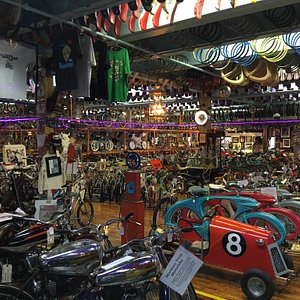
Senator John Heinz History Center - All You Need to Know BEFORE You Go (2024)
- (0.01 mi) 2 Connecting Suites at a Hotel
- (0.03 mi) Hampton Inn & Suites Pittsburgh-Downtown
- (0.15 mi) Homewood Suites by Hilton Pittsburgh Downtown
- (0.15 mi) AC Hotel by Marriott Pittsburgh Downtown
- (0.30 mi) Drury Plaza Hotel Pittsburgh Downtown
- (0.07 mi) Eleven
- (0.04 mi) Sushi Kim Restaurant
- (0.04 mi) Supper on Penn
- (0.11 mi) La Prima Downtown
- (0.25 mi) Bill's Bar & Burger - Westin
Ketch-up on Heinz History
Discover how the heinz family business began with eight-year old henry john heinz selling produce from his mother’s garden in sharpsburg and grew to a worldwide company with more than 5,700 products in 200 countries around the globe., senator john heinz history center.
Stories taken from "57 Servings From the Heinz Table," by Emily Ruby
H.J. Heinz (c. 1869) Original Source: Detre Library & Archives at the Heinz History Center
The Beginning
Henry John Heinz's dedication to hard work and a willingness to seek new opportunities — values learned from his parents — became hallmarks of his career.
H.J. Heinz, portrait (1864) Original Source: Detre Library & Archives at the Heinz History Center
H.J. Heinz, 1864
Born in 1844 to John Henry and Anna Margaretta Heinz, Henry John Heinz grew up in Sharpsburg, Pa., the first of their nine children.
By age 12, Heinz was tending a small garden and selling the produce to local grocers along with his mother’s prepared horseradish.
After taking classes at Duff’s Mercantile College in Pittsburgh, he began helping his father with bookkeeping at his brickyard and even came to own a half-interest in the business.
Copper kettle (c. 1860) Original Source: Heinz History Center Museum Collections
Copper kettle, c. 1860
Anna Heinz purportedly used this copper kettle to make apple butter. Descendants of her friends, the Shaw family, donated it to the History Center.
Heinz office (c. 1900) Original Source: Detre Library & Archives at the Heinz History Center
Heinz office, c. 1900
Heinz credited his mother for his strong faith and work ethic, and for his love of motivational proverbs and aphorisms that he called “mottoes.”
He used them to decorate his company office, stained glass windows at the factory, and company exhibitions. Heinz’s favorite mottoes can be seen on the walls of his office.
Heinz Company exhibition (c. 1940) Original Source: Detre Library & Archives at the Heinz History Center
Heinz Company exhibition, c. 1940
Over time they became a part of the culture and guiding principles of the Heinz company and were used long after his death. The most enduring of his personal mottoes: “To do a common thing uncommonly well brings success.”
Evaporated horseradish, catalog illustration (1895) Original Source: Detre Library & Archives at the Heinz History Center
Evaporated horseradish, catalog illustration, 1895
Heinz’s first product would have been grated horseradish, but by 1895 the company also offered evaporated horseradish.
Evaporated came at a cheaper price point and could be stored for long periods at temperatures that would degrade the fresh product. Heinz became the largest manufacturer of Evaporated Horseradish by 1895.
Heinz baked beans department (1907) Original Source: Detre Library & Archives at the Heinz History Center
An Innovative Factory
In the Pittsburgh factory, and later in factories around the world, Heinz employees prepared and packaged a wide variety of foods.
Heinz Processing Plant (c. 1900) Original Source: Detre Library & Archives at the Heinz History Center
Heinz processing plant, c. 1900
Each department had its own function: cooking soup or fruit preserves, making spaghetti or peanut butter, bottling pickles or olives. When different vegetables or fruits were in season, everyone pitched in to process them.
Employees fill bottles in the ketchup bottling department (1904) Original Source: Detre Library & Archives at the Heinz History Center
Employees fill bottles, 1904
Tomato season was the busiest time at the factory. Teams of workers sorted the tomatoes by hand while others manned the ketchup kettles and bottling machines, which ran 24 hours a day during the autumn harvest.
Heinz microbiological department (1965) Original Source: Detre Library & Archives at the Heinz History Center
Quality Control
In 1900, the Heinz Company established a chemistry laboratory staffed by bacteriologists, microscopists, and other scientists and technicians called “food technologists.”
Heinz experimental department (c. 1900) Original Source: Detre Library & Archives at the Heinz History Center
Heinz experimental department, c. 1900
The lab ensured the quality of produce, the accuracy of recipes and cooking procedures, the cleanliness of the manufacturing process, and the uniformity of finished products.
In the Quality Control Department, food technologists conducted research to improve the nutrition, flavor, and appearance of Heinz foods. One of the first of its kind, the Heinz Company lab pioneered a scientific approach to quality assurance and procedures.
Heinz imperial-style ketchup in translation (1895) Original Source: Detre Library & Archives at the Heinz History Center
Bottles and Product Labels
The label on this Heinz Imperial-brand bottle, the company’s top-of-the-line tomato ketchup, shows the transition from the keystone to pickle logo. Heinz also dropped the possessive "s" between 1890 and 1895.
Heinz baked beans, catalog illustration (1895) Original Source: Detre Library & Archives at the Heinz History Center
Heinz baked beans, catalog illustration, 1895
H.J. Heinz cared about what he put inside the bottle, but he also realized that the package made the first, and often most important, impression.
He carefully crafted the bottles and containers for his products, even patenting some, and put great thought into the label design.
Heinz walnut and mushroom ketchup, catalog illustration (1910) Original Source: Detre Library & Archives at the Heinz History Center
Heinz walnut & mushroom ketchup, catalog illustration, 1910
His labeling emphasized the fresh, natural ingredients inside, especially on containers whose contents could not be seen. For customers who could not read, these illustrative labels indicated the type of product inside.
Heinz's catsup crock (c. 1895) Original Source: Heinz History Center Museum Collections
Heinz's catsup crock, c. 1895
By making Heinz products stand out on the grocery shelf, the company created a memorable brand image for future purchases, especially as packaged foods (and competitors) expanded in the 20th century.
Aristocrat tomato advertising figure (c. 1935) Original Source: Heinz History Center Museum Collections
The Aristocrat Tomato
Boasting “the proudest pedigree in the vegetable kingdom,” Heinz launched the Aristocrat Tomato in the 1930s to promote its tomato-based products. Designed by Lloyd Weed of the Maxon Inc., it became the first of the famous “spokesmen” for Heinz products.
Heinz both at the World's Fair, Columbian Exposition (1893) Original Source: Detre Library & Archives at the Heinz History Center
The Pickle Charm
At the 1893 World’s Columbian Exposition in Chicago, H.J. Heinz found his company’s exhibition space located on the second floor of the Agricultural Building too far from major attractions.
Heinz "luggage" tag from the Columbian Exposition (1893) Original Source: Detre Library & Archives at the Heinz History Center
Heinz "luggage" tag from the Columbian Exposition, 1893
To draw visitors, he had small pieces of heavy paper cut to look like luggage tags and printed with an offer to the holder for a free souvenir at the Heinz exhibit. He scattered thousands of these tags throughout the fairgrounds.
It is estimated that over the course of the fair, hundreds of thousands of people climbed the stairs to the Heinz exhibit, where they tasted food samples and received a pickle charm.
Heinz pickle charm (c. 1893) Original Source: Heinz History Center Museum Collections
Heinz pickle charm, c. 1893
The popular little pickle charm evolved through 10 different shapes and styles into today’s plastic pin. The pickle pin has been called one of the most effective marketing promotions of all time.
Interior of the Heinz factory (c. 1905) Original Source: Detre Library & Archives at the Heinz History Center
Factory Tours
In 1899, H.J. Heinz opened his factory complex in Allegheny City (now Pittsburgh’s North Side neighborhood) to the public.
Trolley sign advertising the Heinz factory tour (c. 1910) Original Source: Heinz History Center Museum Collections
Trolley sign advertising the Heinz factory tour, c. 1910
A revolutionary concept in public relations, visitors were able to see Heinz food products being manufactured, from the can-making department to soup-filling machines to pickle bottling tables.
Each tour ended with complimentary samples of Heinz products and a pickle pin or charm to take home.
Heinz factory tour pass Original Source: Detre Library & Archives at the Heinz History Center
Heinz factory tour pass
Tens of thousands of people, from school children to foreign tourists, visited the factory each year. The tours demonstrated the Heinz commitment to cleanliness, innovation, and pure foods, and reinforced the brand image.
The company stopped the tours in 1972, when automated production left little for visitors to see.
The content of this exhibit was adapted from " 57 Servings From the Heinz Table ," by Emily Ruby. You can learn more in the Heinz exhibit at the Heinz History Center or by purchasing the book online.
Won't You Be My Neighbor?
#pixburgh: the 'burgh, the life of a heinz pickle, innovators: place and process, a tradition of innovation, olympic glory, the jewish hill district, blue-collar 'burgh, barrier breakers.
Pretty Sweet Travel
Tips, promo codes, free shipping.

Wellness Food & Drink How Heinz Ketchup Is Made (Wow, In a Giant Factory!)
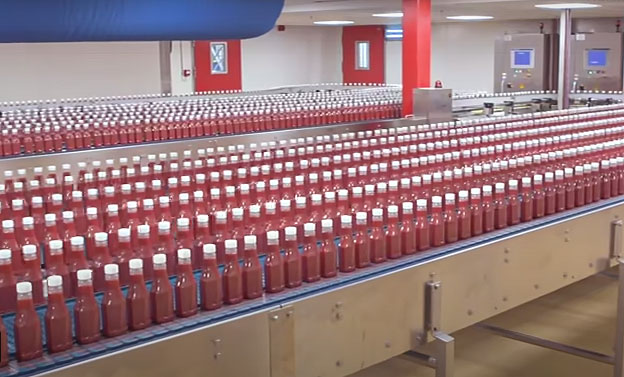
How Heinz Ketchup Is Made (Wow, In a Giant Factory!)
Tomato ketchup is one of the world’s most popular condiments, and it can be found in many households around the world. We have ketchup with burgers, fries, and just about anything that we can think of to complement our meals.
Heinz is the ketchup market leader in the U.S. and sells over 650 million bottles of ketchup around the world every year . Let’s take a tour of the Heinz European factory in Elst, Netherlands to see how the world-famous condiment is made.

Heinz Ketchup Factory: How Ketchup Is Made
Heinz process manager, Danielle Traa will be happy to take you on a tour of the Heinz ketchup factory. Here’s how ketchup is made :
“Here in Elst, we make sauces for the Kraft Heinz company. Our main product is ketchup. That’s 70% of what we do. We make about 1.8 million bottles of ketchup a day , and that relates to about 175,000 metric tons of ketchup a year .”
The ketchup-making process starts here, where crates of tomato paste weighing 1,300 kilograms are transported from the Heinz warehouse using automated forklifts. The crates are opened and then go to the paste dumper, where these huge rolling pins squeeze the paste out of the package.
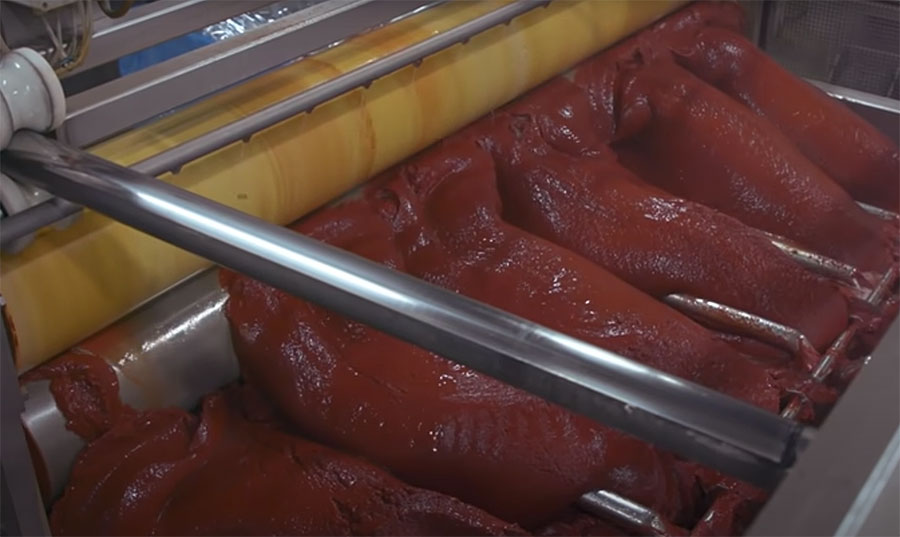
After the paste has been extracted, it sits in a storage bin, where it’s mixed with water to give it a smoother consistency. This makes it easier to transport to the storage tank, where it will sit until moving on to the ketchup kitchen.
This is our ketchup kitchen, and this is where we actually produce the tomato ketchup. Ketchup is made of five ingredients :
- tomato paste
- secret spices (and love?)
The spices are dosed by hand. We dose everything, we mix it, and afterward, it goes into our process. The process is mainly about heating the ketchup and then cooling it down. Afterward, we fill it into the bottles.
But before any ketchup can be shipped, each batch must be rigorously tested through this contraption, which Heinz calls, “ the quantifier .”
*Coupon: Smile Direct Club Aligners: $100 Off
The Ketchup Quantifier
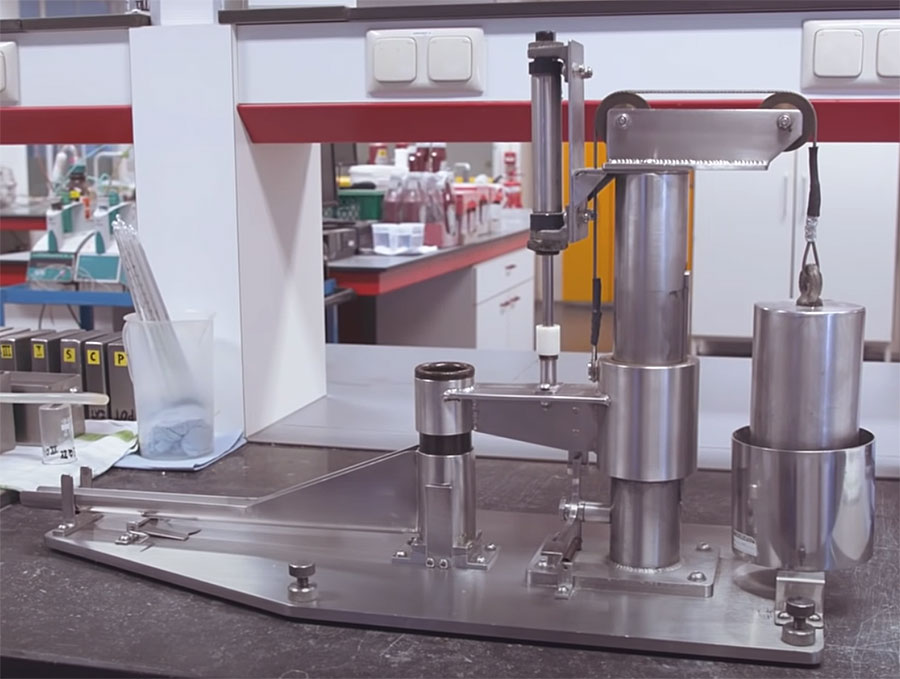
This is the quantifier . (Not to be confused with the 1988 direct-to-tv movie, The Quantifier, starring Sylvester Stallone, haha!) It’s a method where we measure the viscosity of our Heinz tomato ketchup. It’s a methodology that we use in all our ketchup factories so that we compare the ketchup quality for all the factories.
What we do is we put a certain amount of ketchup inside the quantifier, we release it, and we measure how fast it has traveled after 10 seconds. 10.5, within range. It’s a special method designed by Heinz.
The ketchup cannot move faster than 0.028 mph . If it has traveled too far, we have to block it, cannot sell it. If it’s within the range, we can release it.
*Related: McDonald’s Burger and Bun Factory
The Ketchup Making Process Continues
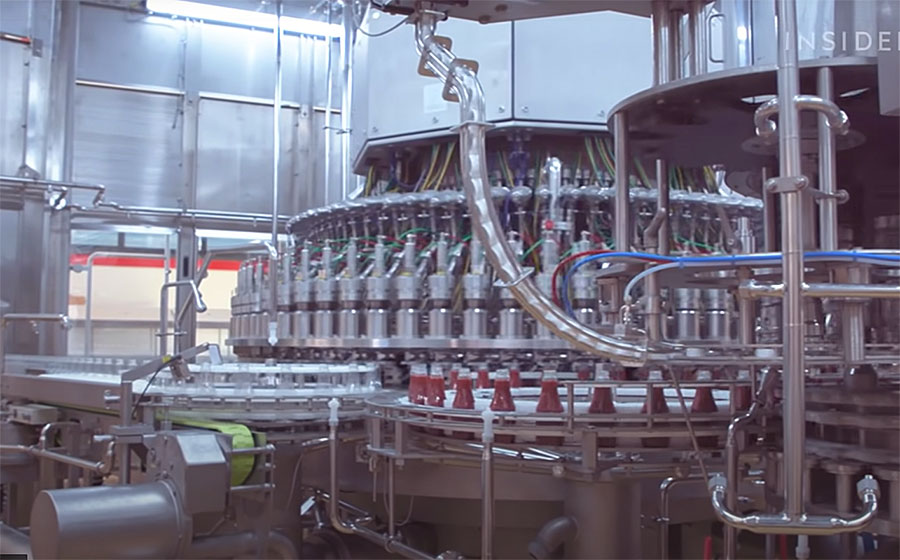
It’s for the empty bottles. They go into the filler. We have 70 filling hats. It’s a filler that works by weight.
So, a bottle comes in, we check the weight of the empty bottle, we fill it to the proper weight with ketchup, and then we check again if we reached the filling weight. The boxes with caps are emptied at the bottom floor by the operator and transported upstairs.
Did you know: There are about 255 workers employed at the Dutch Heinz factory in Elst, Netherlands
Ketchup Bottles Get Labeled
Upstairs, we make sure the caps are put in the right position and go to a single row of caps so that we can position them properly on the bottle in the filling machine. And for this bottle, we have three labels.
So, we have a neck label, a back label, and a front label. These labels are self-adhesive, so we don’t need any glue for them.
After the ketchup labeler, we go to a tray packer, where we get a tray from the bottom. We fold it around the bottles. After that, put a shrink wrap around it and make sure the bottles are tight and packed in the tray.
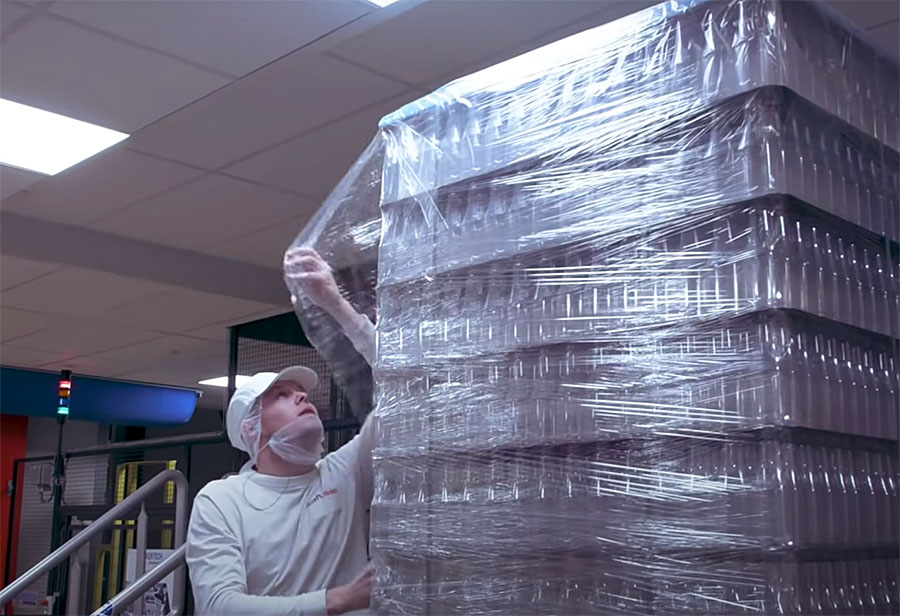
From the tray packer, we go to the palletizer, where a robot puts the trays in the right position. And from the right position, we make a layer for layer on the pallet. After that, we put shrink-wrap around it. Then, the ketchup is ready to be shipped from Elst, Netherlands to 72 countries around the world.
*Related: McDonald’s Portions Over the Years
Heinz Ketchup History
Now that we’ve seen how its iconic ketchup is made, how did Heinz become the prominent brand it is today? Here’s a brief history of Heinz ketchup.
Heinz was founded in Pittsburgh in 1869 by a 25-year-old named Henry John Heinz, who began his business by selling his mother’s horseradish recipe. Over the years, Heinz expanded his catalog, selling pickles, vinegar, and eventually tomato ketchup, which launched in 1876.
It was a roaring success, and in 1886, the company began shipping the sauce to the UK. Following the overwhelming popularity of Heinz ketchup, Heinz started producing 13 million bottles a year and exporting them all over the world. This explains why you’re never too far from a bottle of Heinz tomato ketchup!
*Related: $4 WSJ Subscription? – Featured on linktree
- Skip to primary navigation
- Skip to main content
- Skip to footer

OpEx Learning Resources
Lean Six Sigma Articles, Guides, Insights, and more!
Heinz Factory Tour [video]
By OpEx Learning Team , Last Updated June 29, 2013
Who hasn’t heard of Heinz? Yeah, that’s what I thought. They have been around for over 100 years and are an American icon – the ketchup is just as much American as apple pie. This Heinz Factory Tour shows you how they pick tomatoes and how they manufacture products such as their famous ketchup and also spaghetti sauce.
In the first video, you’ll learn a little bit of history – the Heinz perspective on agriculture to the philosophy of continuous flow, which they adopted soon after they began manufacturing ketchup. The first video also shows the overall supply chain from the tomato to manufacturing to fulfillment and distribution to the delivery of the finished goods to the store shelves and then finally to the kitchen table.
According to the video, the Heinz distribution model pioneered the direct to store fulfillment. I’m not sure about that, but the video is interesting and educational. Be warned, however, the video is a little old. Be patient with it – it’s interesting.
Become a Lean Six Sigma professional today!
Start your learning journey with Lean Six Sigma White Belt at NO COST
Use coupon code:
Related posts:.
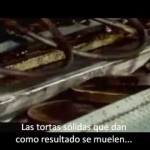
Subscribe to our newsletter
Get the latest posts delivered right to your inbox. We do not spam you and you can always unsubscribe later any time.
Reader Interactions
Leave a reply cancel reply.
Your email address will not be published. Required fields are marked *
Save my name, email, and website in this browser for the next time I comment.
This site uses Akismet to reduce spam. Learn how your comment data is processed .
The Iconic History of Heinz Ketchup

The Evolution of Heinz Ketchup: From Condiment to Iconic Brand
Ketchup is a staple condiment found in households around the world, and one brand has stood the test of time and become synonymous with this beloved sauce – Heinz Ketchup . With its distinctive taste and iconic packaging, Heinz Ketchup has become a household name, loved by millions. Let’s take a journey through the history and evolution of Heinz Ketchup, from its humble beginnings to its status as a global and famous Pittsburgh brand .

The Early Days of Heinz Ketchup
The story of Heinz Ketchup began in 1876 when it was first marketed as “catsup” by Henry J. Heinz. The company, then known as Heinz Noble & Company, started small, producing horseradish in the basement of Heinz’s father’s house in Sharpsburg just north of the city of Pittsburgh . However, it wasn’t until Heinz partnered with his brother John and cousin Frederick that the company truly took off.
In 1888, Heinz bought out his partners and reorganized the company as the H. J. Heinz Company. It was during this time that Heinz introduced the now-famous slogan “57 Varieties.” Interestingly, the number 57 was chosen by Heinz even though the company produced more than 60 products at the time. This clever marketing move created a sense of exclusivity and curiosity among consumers.
Innovations and Expansion
Heinz was not only a master marketer but also an innovator in food processing. He implemented sanitary food preparation techniques and was a strong advocate for the Pure Food and Drug Act, which was passed in 1906. Heinz’s commitment to quality and purity set the company apart from its competitors.
In 1908, Heinz established a processing plant in Leamington, Ontario, Canada, to meet the growing demand for tomatoes and other products. This plant would become one of the company’s largest and most significant locations. Heinz continued to expand its operations, opening factories in different parts of the United States and even overseas.
The Rise of Heinz Ketchup

While Heinz produced a wide range of food products, it was their tomato ketchup that would become their most famous and successful product. Heinz Ketchup quickly gained popularity in the United States, thanks to its unique flavor and high-quality ingredients. By the early 20th century, Heinz Ketchup was a staple in American households.
The iconic glass bottle with its octagonal shape was introduced in 1889 and became a hallmark of Heinz Ketchup. Despite changes in packaging over the years, the octagonal bottle remains a symbol of the brand’s heritage and commitment to quality.
Global Expansion and Varieties
Heinz’s success in the United States paved the way for its global expansion. The company opened factories in different countries, including the United Kingdom and the Netherlands, to cater to regional tastes and preferences. Each country’s version of Heinz Ketchup had subtle variations to suit local palates.
In addition to the classic tomato ketchup, Heinz also introduced a variety of flavored ketchups, such as balsamic vinegar and sugar-free options. These innovations allowed Heinz to cater to changing consumer preferences and expand its market reach.
The Heinz Legacy
Heinz’s commitment to quality and innovation has solidified its position as a market leader in the condiment industry. The company’s dedication to producing high-quality products made from the finest ingredients has earned the trust and loyalty of consumers worldwide.
In 2013, Heinz was acquired by Berkshire Hathaway and 3G Capital, forming the Kraft Heinz Company. This merger created one of the largest food and beverage companies in the world. Despite changes in ownership, Heinz Ketchup has remained a beloved and iconic brand.
Heinz Ketchup has come a long way since its humble beginnings in a basement in Pennsylvania . From its innovative packaging to its commitment to quality, Heinz Ketchup has become a global phenomenon. Its distinctive flavor and iconic branding have made it a household name and a staple in kitchens around the world.
As we continue to enjoy our burgers, fries, and sandwiches, let us remember the legacy of Heinz Ketchup and how it has shaped the way we enjoy our favorite foods. So the next time you reach for that bottle of Heinz Ketchup, remember the journey it has taken to become the condiment of choice for millions.
Share this:

- Share on Tumblr
More Pittsburgh

4 Great Restaurants in North Fayette Township

Pittsburgh Beautiful: Roberto Clemente
Privacy overview.
- Bahasa Indonesia
- Slovenščina
- Science & Tech
- Russian Kitchen
Perm: Lord of the Northern Urals

Perm. Sergei Gribushin House. Built at turn of 20th century by Alexander Turchasov. Referred to in Boris Pasternak's Doctor Zhivago as the "house with statues". August 23, 1999
Located just on the European side of the Ural Mountains, the metropolis of Perm is both an industrial powerhouse and one of Russia’s cultural centers. The main part of the city extends for miles along the high east bank of the Kama River.
In summer 1909, the Russian photographer and chemist Sergei Prokudin-Gorsky made his first trip to Perm as part of his project to document the diversity of the Russian Empire in the early 20th century. Prokudin-Gorsky’s panoramas of Perm included detailed vistas of the riverfront. My first visit to the Perm region occurred nine decades late, in the summer of 1999. Return trips ln 2014 and 2017 revealed a city in the midst of a building boom.

View up left bank of Kama River (taken from railroad bridge). Beneath the smoke plume: bell tower & Cathedral of the Transfiguration. Smoke is multicolored because of motion during the three sequential exposures of the negative. Summer 1909
A history entertwined with industry
The name “Perm” (apparently derived from Finno-Ugric words pera ma, meaning "distant land") is documented as early as the 12th-century chronicle “Tale of Bygone Years”. At that time "Perm" was variously used to include territory in the northern Urals that was nominally controlled by the economic power of Novgorod, whose hunters and traders reaped the bounty of its valuable furs.
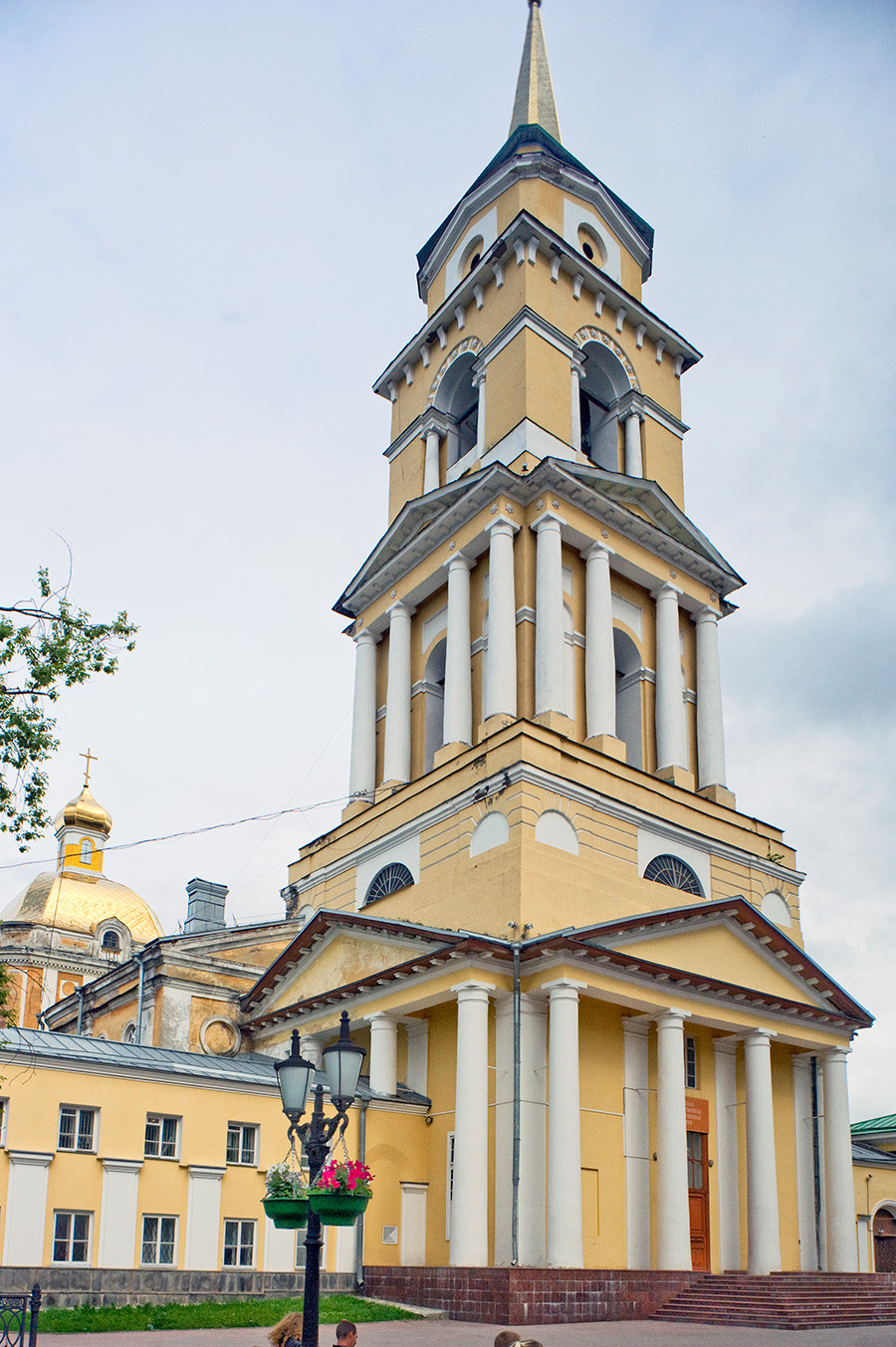
Bell tower of the Cathedral of the Transfiguration of the Savior. June 15, 2014
The settlement of Perm, however, originated in the early 18th century as part of the quest by Peter the Great to exploit the vast ore deposits of the Ural Mountains. These raw materials provided secure sources of essential industrial-grade metals needed above all for the army.
As with other Urals towns such as Yekaterinburg , the guiding force in developing this area was Vasily Tatishchev (1686-1750), one of Russia's early professional historians. A scholar with a gift for practical activity, Tatishchev had boundless admiration for Peter the Great and was an influential proponent of the central role of autocrat and state in Russian history, of the view that Russians are a "state people."
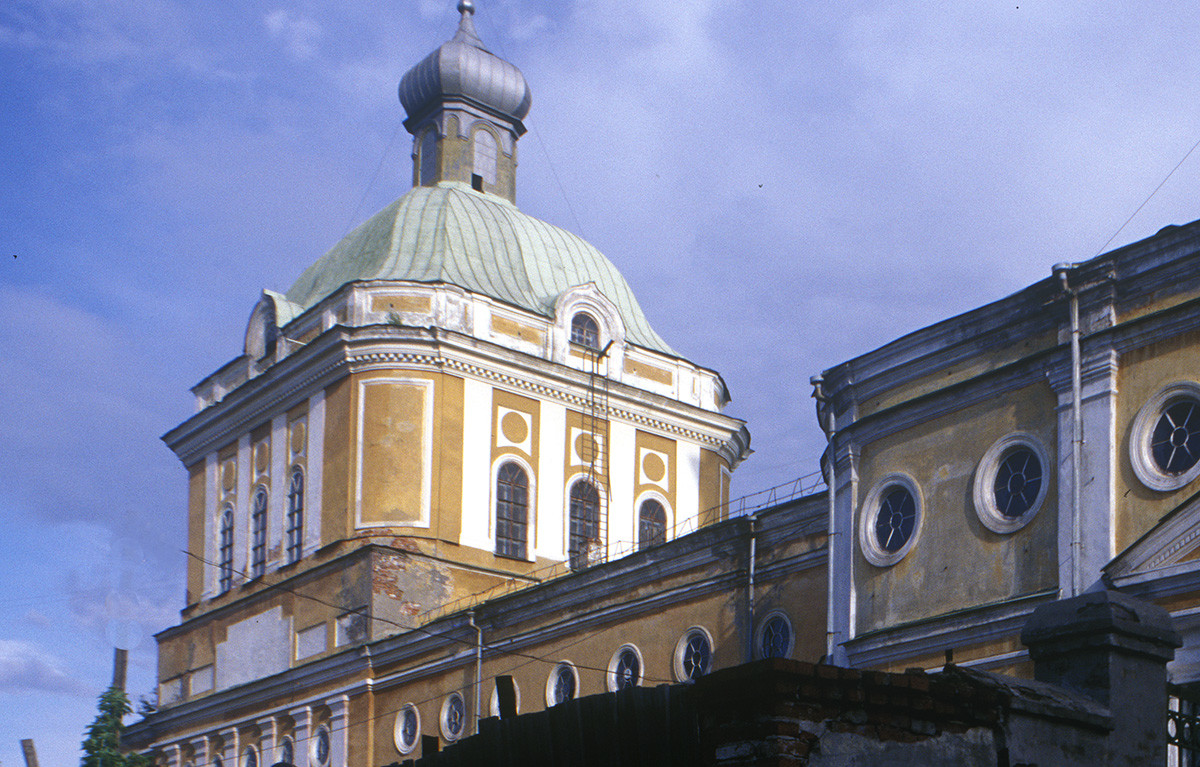
Cathedral of the Transfiguration of the Savior, northwest view. August 23, 1999
During the 1720s, Tatishchev established settlements at mines, smelters, and metal-working plants throughout the Ural Mountains. In 1720, he chose the 17th-century village of Egoshikha, located near the small Egoshikha River, a tributary of the Kama. With nearby sources of copper ore, dense forests and ample water supplies, the site was considered ideal for a large smelter. The project was entrusted to Georg Wilhelm Henning (de Gennin; 1676-1750), a military engineer of German origins who worked closely with Tatishchev.
Construction began on the main Egoshikha factory on May 4, 1723, which is considered the city’s founding date. The name “Perm” was officially adopted only in 1781 after a command by Catherine the Great that transformed the large factory settlement into an administrative center for the Urals.
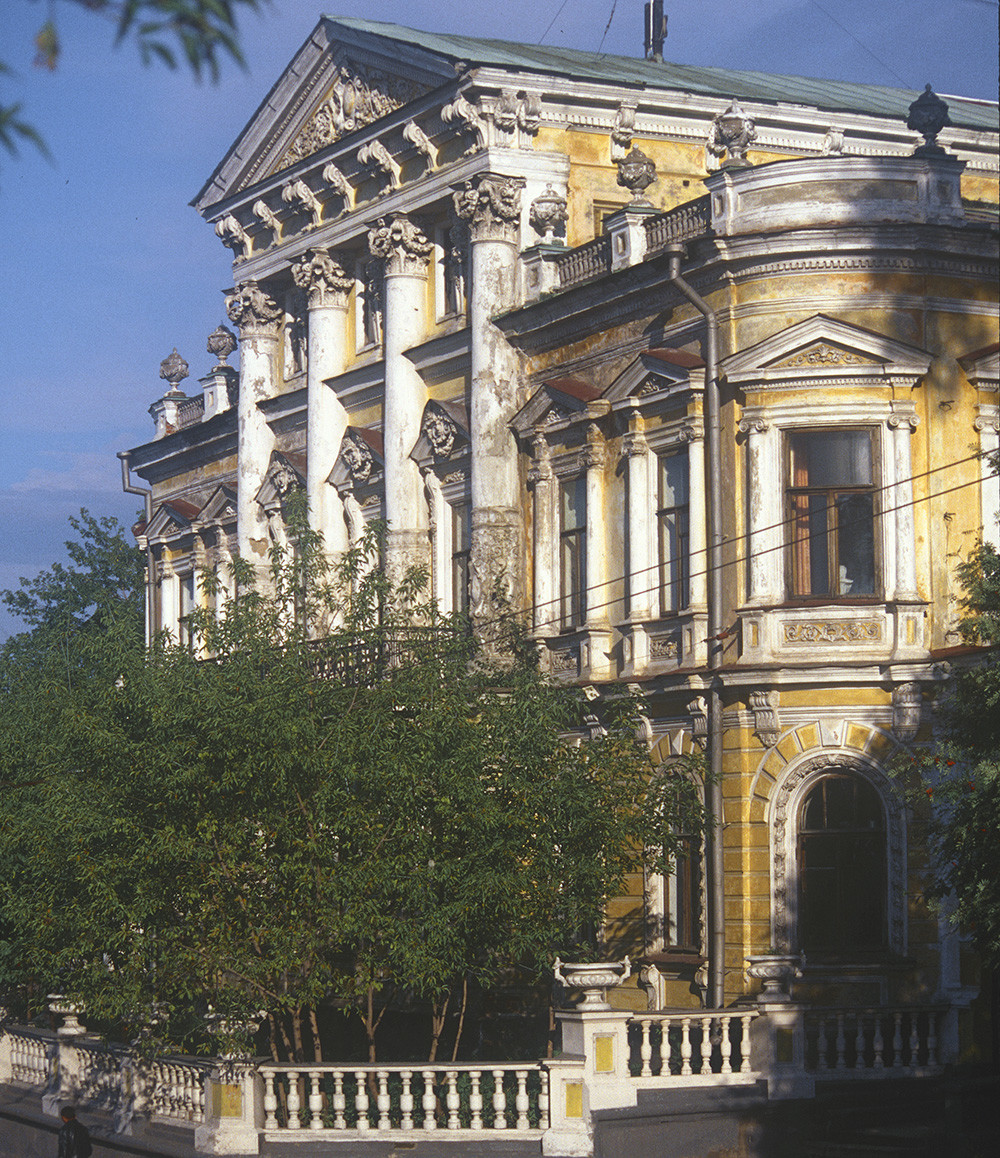
Meshkov House, main facade. August 23, 1999
Since its origins, Perm has been associated with heavy industry, and by the 1860s it became one of the most important arms producing areas in Russia. The cannon works at Motovilikha — a factory town founded in the 18th century near the copper plant at Egoshikha — became a key component in the Russian military-industrial complex.
A transport hub
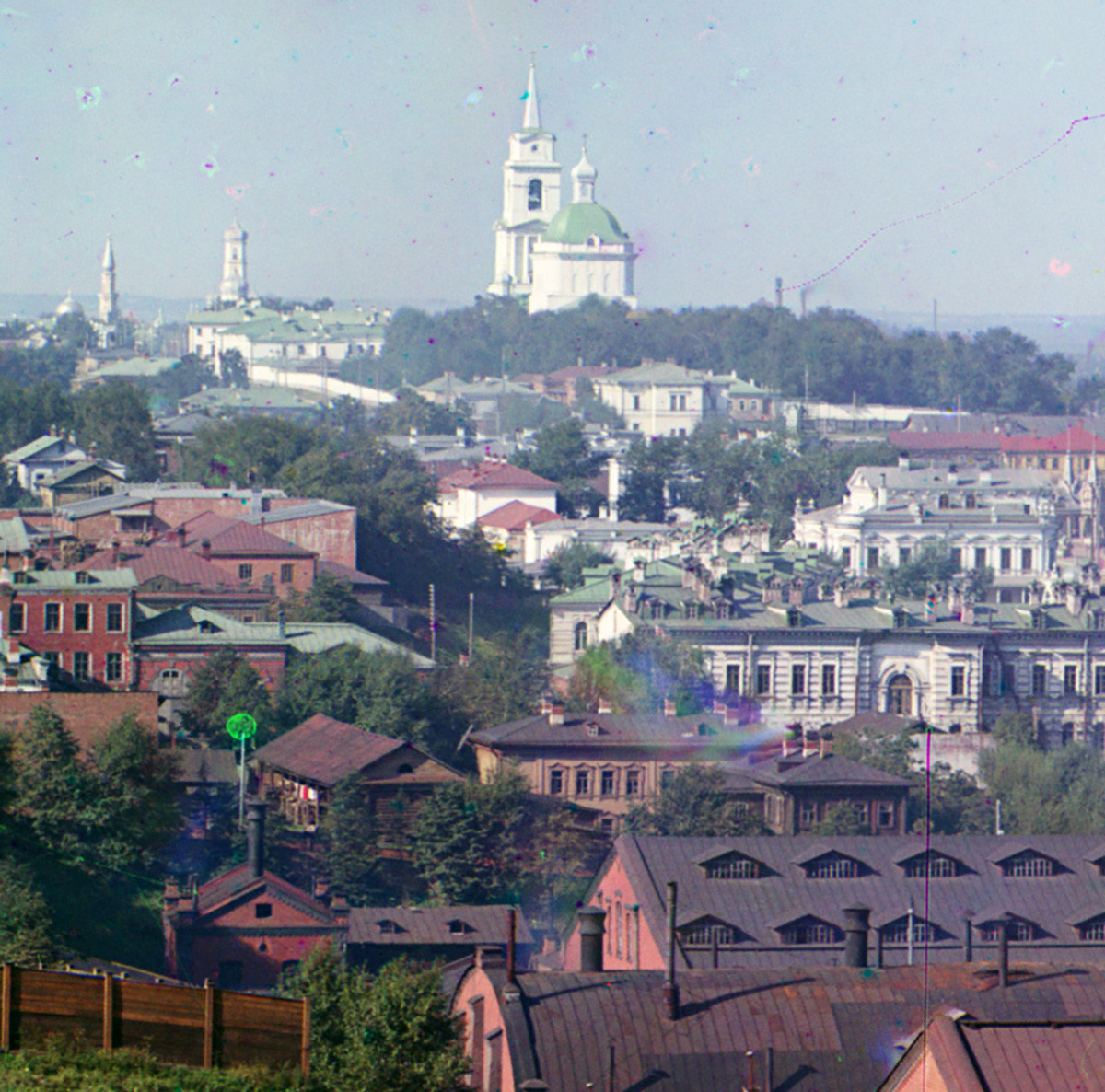
View of central Perm from City Hills. In distant background from left: minaret of Main Mosque, bell tower of Trinity Cathedral. Center: Transfiguration Cathedral. Center far right: side & back of Meshkov House. All buildings linked by Monastery Street. Summer 1909.
Because of its favorable location within the Volga River basin, Perm during the 19th century developed into a transportation center for salt and other minerals, as well as metal ore and the products of metal factories throughout the western Ural Mountains. In 1846, regular steamboat service appeared on the Kama.
In 1863, Perm was included in the main Siberian highway, and in 1878, construction was completed on the first phase of the Urals Railroad from Perm to Ekaterinburg, part of a railroad construction boom that culminated in the early 20th century with the completion of the TransSiberian Railway. Perm’s growth in the 19th century was reflected in Prokudin-Gorsky’s overviews of the central city, with its belching smokestacks.
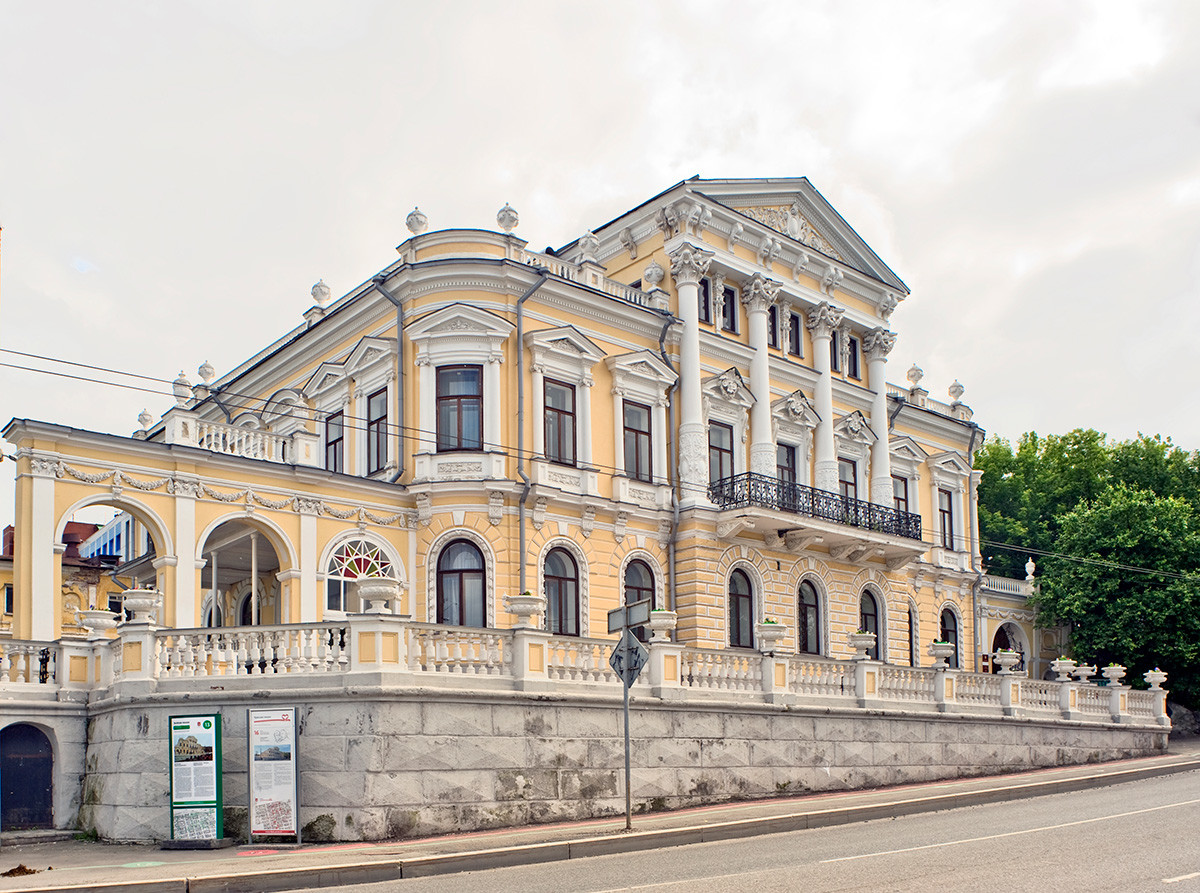
Meshkov House, view from Monastery (formerly Ordzhonikidze) Street. June 15, 2014
Distinctive landmarks
Among the landmarks in his photographs is the Cathedral of the Transfiguration of the Savior, overlooking the Kama. The shrine was originally part of the Transfiguration Monastery, founded in 1560 by the Stroganovs for their settlement up the Kama River at Pyskor. In 1781, the monastery moved to Perm, recently elevated to the status of town and the seat of a diocese. Begun at the end of the 18th century, construction of the Perm cathedral lasted until 1819. Thereafter, work began on its majestic neoclassical bell tower, designed by Ivan Sviyazev and finished in 1832.

Bell tower of Trinity Cathedral on Sludka Hill. June 15, 2014
Much of Perm burned during a fire in 1842, but the town quickly recovered. During the half century before the First World War, rapid growth led to the construction of brick buildings in eclectic ornamental styles.
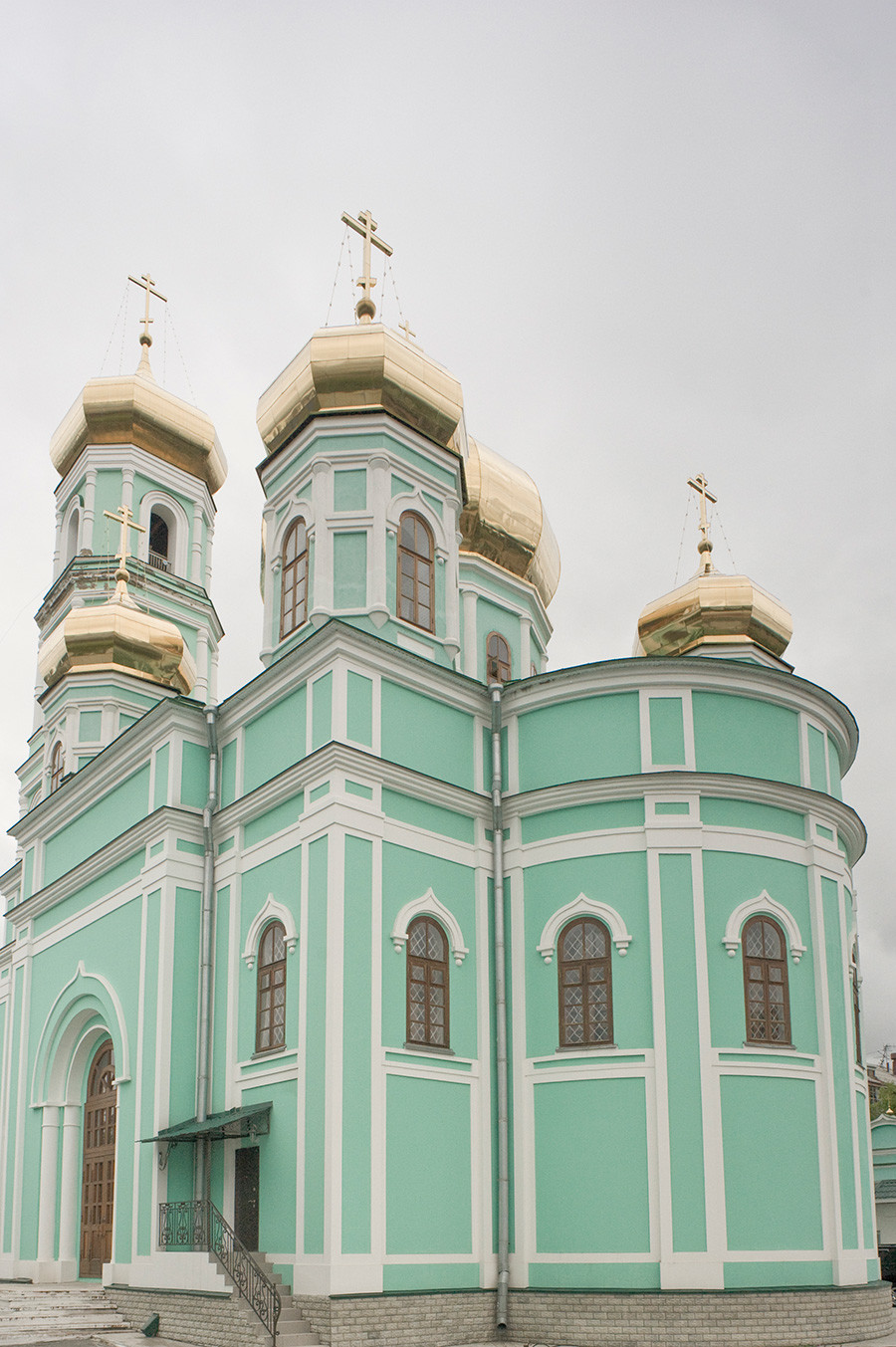
Trinity Cathedral, southeast view. June 15, 2014
Despite sweeping changes in the century following Prokudin-Gorsky’s visit, many of the buildings captured in his photographs remain, Prominent among them are the Ascension-St. Feodosy Church (1903-10) and the Trinity Cathedral (1846-49).
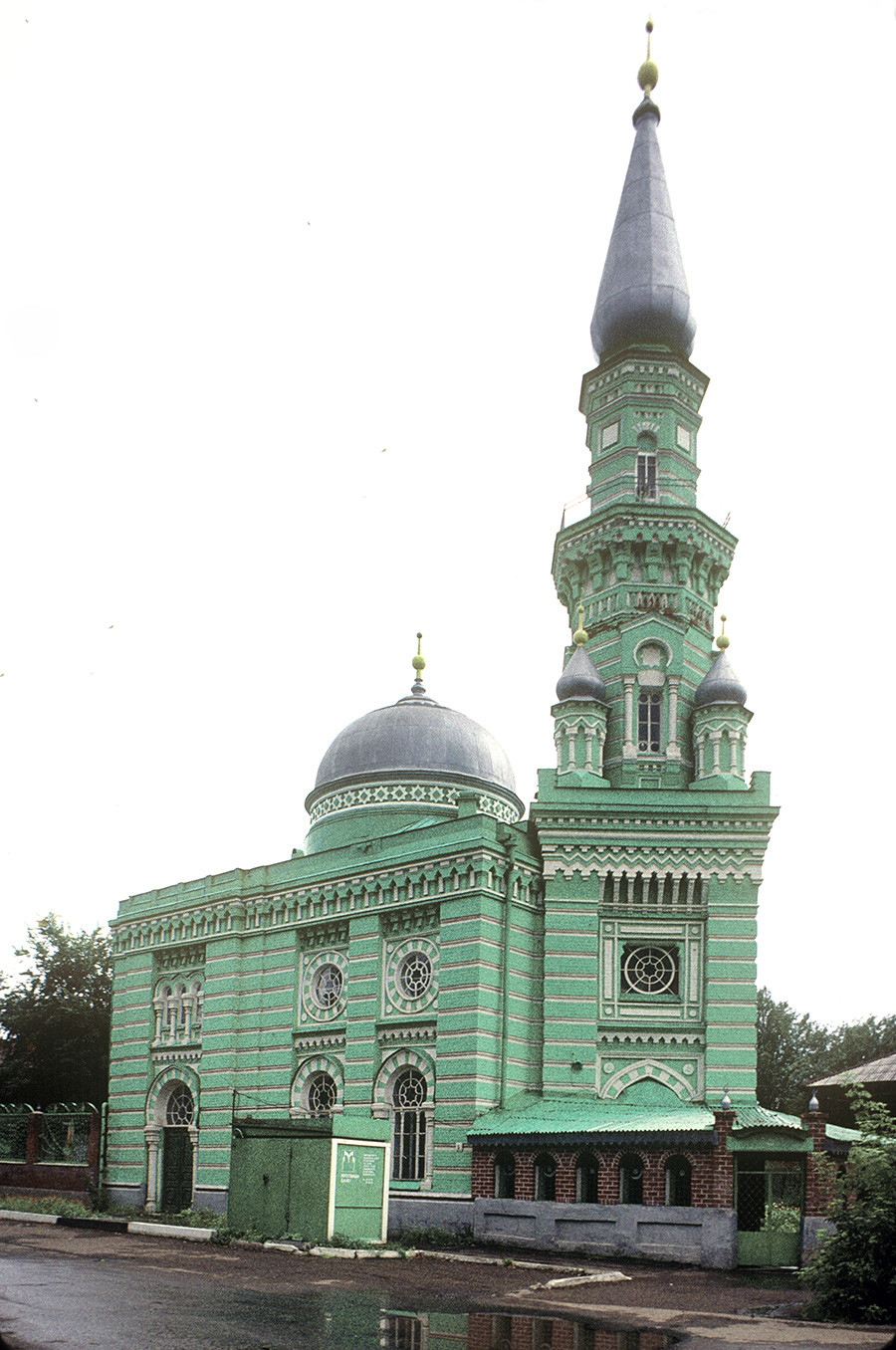
Main mosque & minaret. August 22, 1999 11.
One of the most distinctive landmarks in his panoramas is the towering minaret of Perm’s main mosque, endowed by local merchants and designed in a Moorish style by Aleksandr Ozhegov. Completed in 1903, its tall minaret soars above wooden houses and century-old brick buildings in what was once a Tatar district. The area is now overshadowed by a skyscraper apartment complex and by the nearby office tower of energy giant Lukoil.
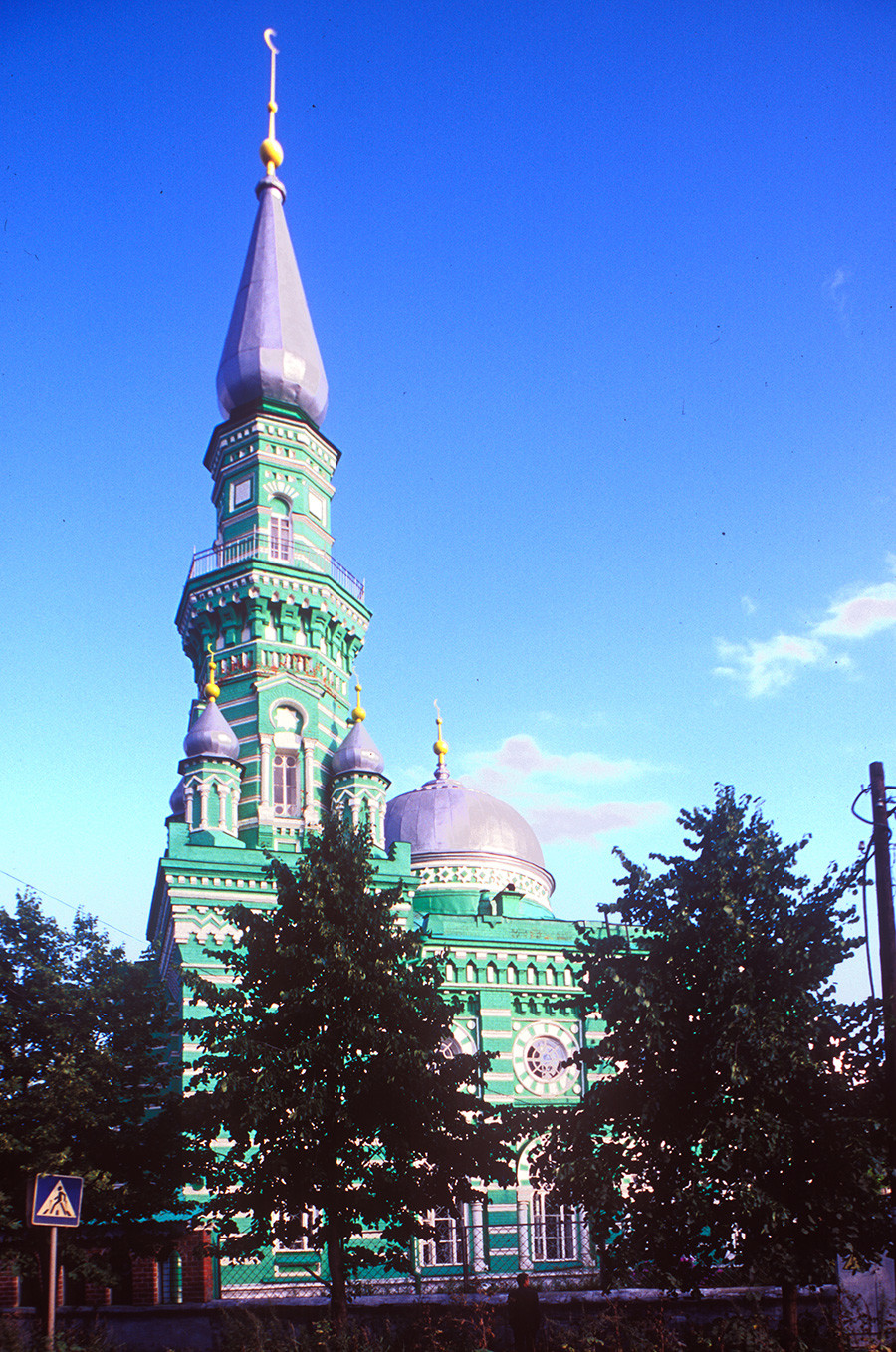
Main moscue & minaret in evening light. August 23, 1999.
Civil war prize
Like other industrial and railroad towns in the Urals, Perm was hotly contested during the Russian Civil War. For a few months, it appeared that Admiral Alexander Kolchak's White forces, which captured Perm on Christmas Eve in 1918, would prevail in their drive westward. Yet the energetic strategy of the Red commanders such as Mikhail Frunze and Vasily Bliukher drove Kolchak back from Perm and the Urals in what proved to be a disastrous retreat for White forces. In a further twist of fate, the victorious Red commander Bliukher fell victim to Stalin's purges in 1938. Perm during the Civil War is generally considered to be portrayed under the name “Yuriatin” in Boris Pasternak’s novel Doctor Zhivago .
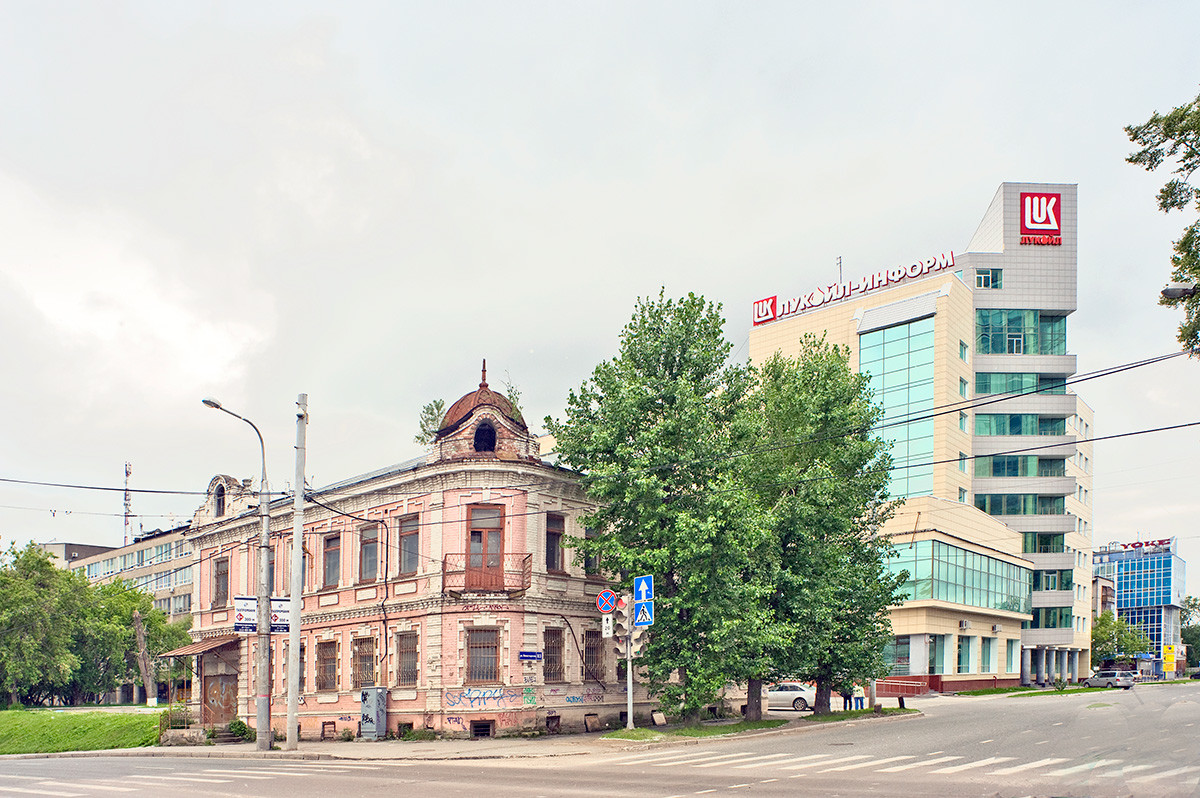
Perm old & new. Late 19th-century house, Monastery Street 83. Right: Lukoil Building. June 15, 2014
Despite extensive damage in the wake of the Civil War, Perm regained its industrial power in the 1930s. In March 1940 the city was renamed Molotov in honor of Vyacheslav Molotov (1890-1986), a member of Stalin’s inner circle. The name “Perm” was restored in October 1957 in the wake of Nikita Khrushchev’s campaign of de-Stalinization.
With slightly over a million inhabitants, Perm belongs to a cluster of cities (Krasnoyarsk, Voronezh, Ufa) that falls just under Russia’s top 10. The city's economy rests on the viability of local industry, which includes not only metal working and engine production but also major oil refineries and chemical plants.
Prokudin-Gorsky’s photographs of Perm superbly convey the sense of this bustling industrial and transportation nexus.
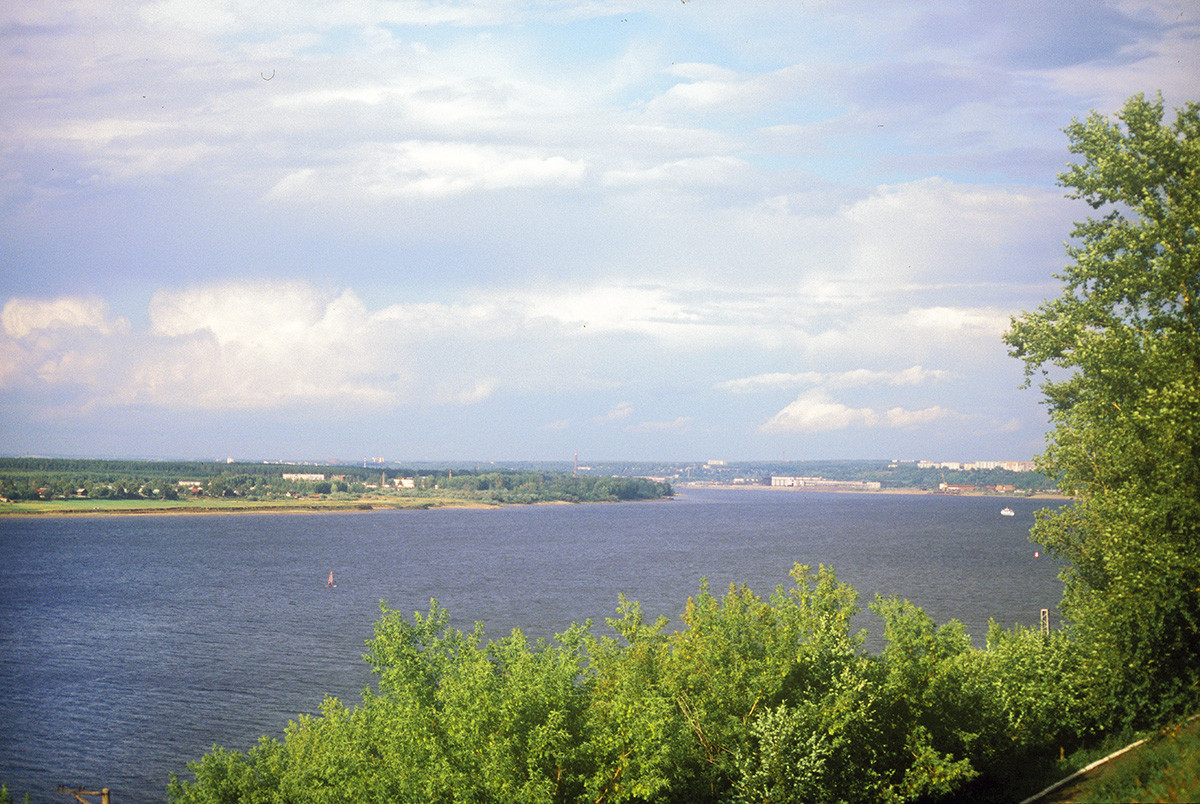
View of Kama River northwest from Transfiguration Cathedral. August 21, 1999
In the early 20th century the Russian photographer Sergei Prokudin-Gorsky devised a complex process for color photography. Between 1903 and 1916 he traveled through the Russian Empire and took over 2,000 photographs with the process, which involved three exposures on a glass plate. In August 1918, he left Russia and ultimately resettled in France with a large part of his collection of glass negatives. After his death in Paris in 1944, his heirs sold the collection to the Library of Congress. In the early 21st century the Library digitized the Prokudin-Gorsky Collection and made it freely available to the global public. A number of Russian websites now have versions of the collection. In 1986 the architectural historian and photographer William Brumfield organized the first exhibit of Prokudin-Gorsky photographs at the Library of Congress. Over a period of work in Russia beginning in 1970, Brumfield has photographed most of the sites visited by Prokudin-Gorsky. This series of articles will juxtapose Prokudin-Gorsky’s views of architectural monuments with photographs taken by Brumfield decades later.
If using any of Russia Beyond's content, partly or in full, always provide an active hyperlink to the original material.
to our newsletter!
Get the week's best stories straight to your inbox
- New book by William Brumfield reveals the miraculous architecture of the Russian North
- Kasli in the Ural Mountains: The art of sculpting in iron
- Kyshtym in the Ural Mountains: Idyllic landscape, turbulent history
This website uses cookies. Click here to find out more.
Kraft Heinz is addressing some website issues that may make certain features temporarily unavailable. We apologize for the inconvenience and look forward to restoring access to all of our sites as soon as possible.

Beloved Global Brands
The Kraft Heinz Company has an unparalleled portfolio of powerful and iconic brands.

Bring Your Appetite For More
We at Kraft Heinz are unrelenting in our quest to transform the food industry. Join us and bring your appetite for more. Find out what it takes to work here.
A Platform for Performance
The Kraft Heinz Company is the third-largest food and beverage company in North America and the fifth-largest food and beverage company in the world, with eight $1 billion+ brands. A globally trusted producer of delicious foods, The Kraft Heinz Company provides high quality, great taste and nutrition for all eating occasions whether at home, in restaurants or on the go.
- Company Profile
- Company News
- SEC Filings
- Events & Presentations
- Stock Information
- Dividend History
- Corporate Governance
- Investors FAQ
Campbell Soup Company
Connecting people through food they love..
Over 150 years of making the delicious, well-crafted soups, simple meals, snacks, and beverages you love.

We’re committed to making a positive impact by providing food you can trust, strengthening communities, empowering people to thrive, and working toward a healthier environment.

Trusted food

Vibrant communities

Thriving people

Healthy environment

Meet our soups
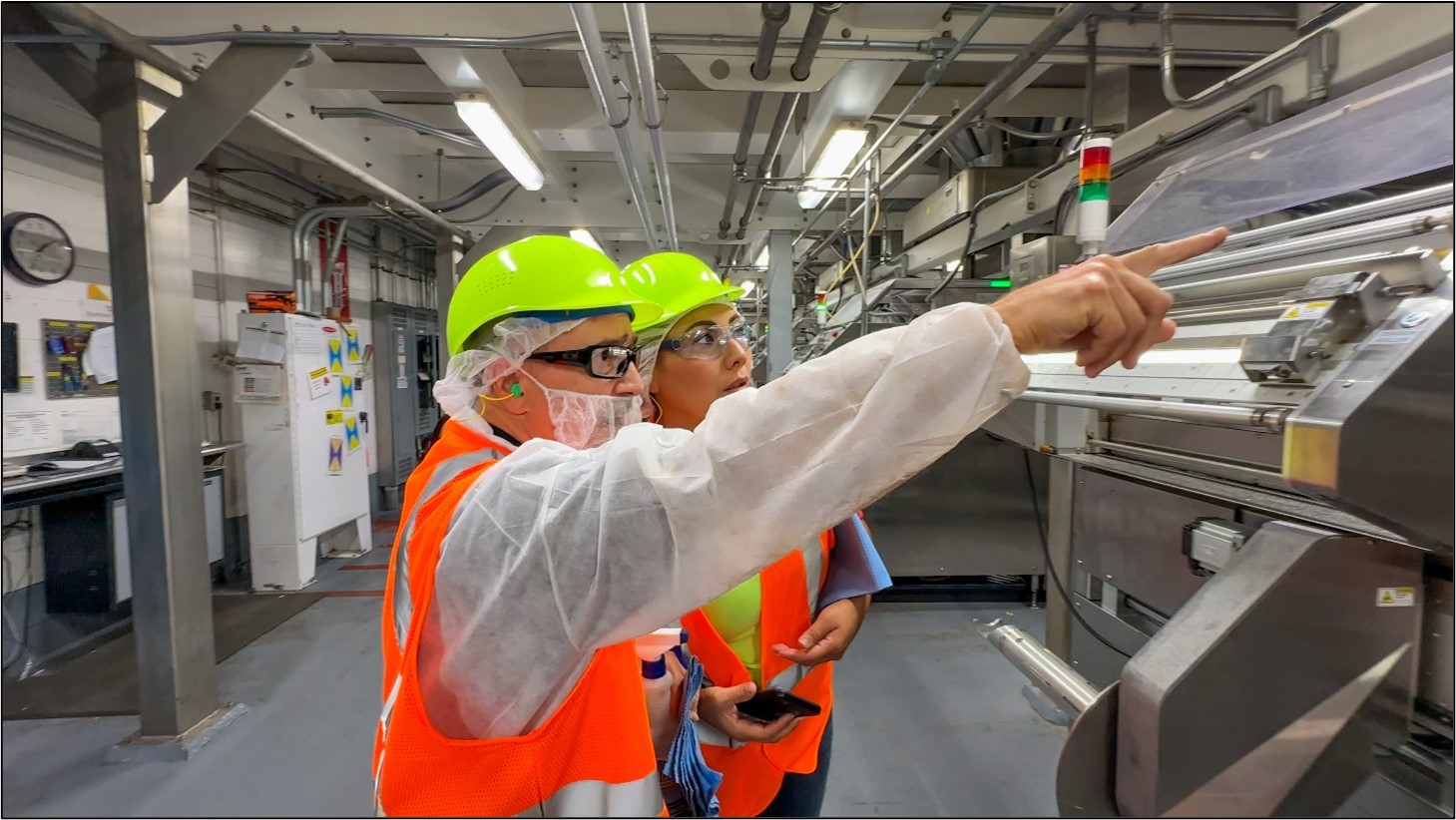
Sustainability
Sustainable solutions: Find & Fix utility leak program

Investing $50 million in our Camden Headquarters

Full Futures: Year two of our school nutrition program
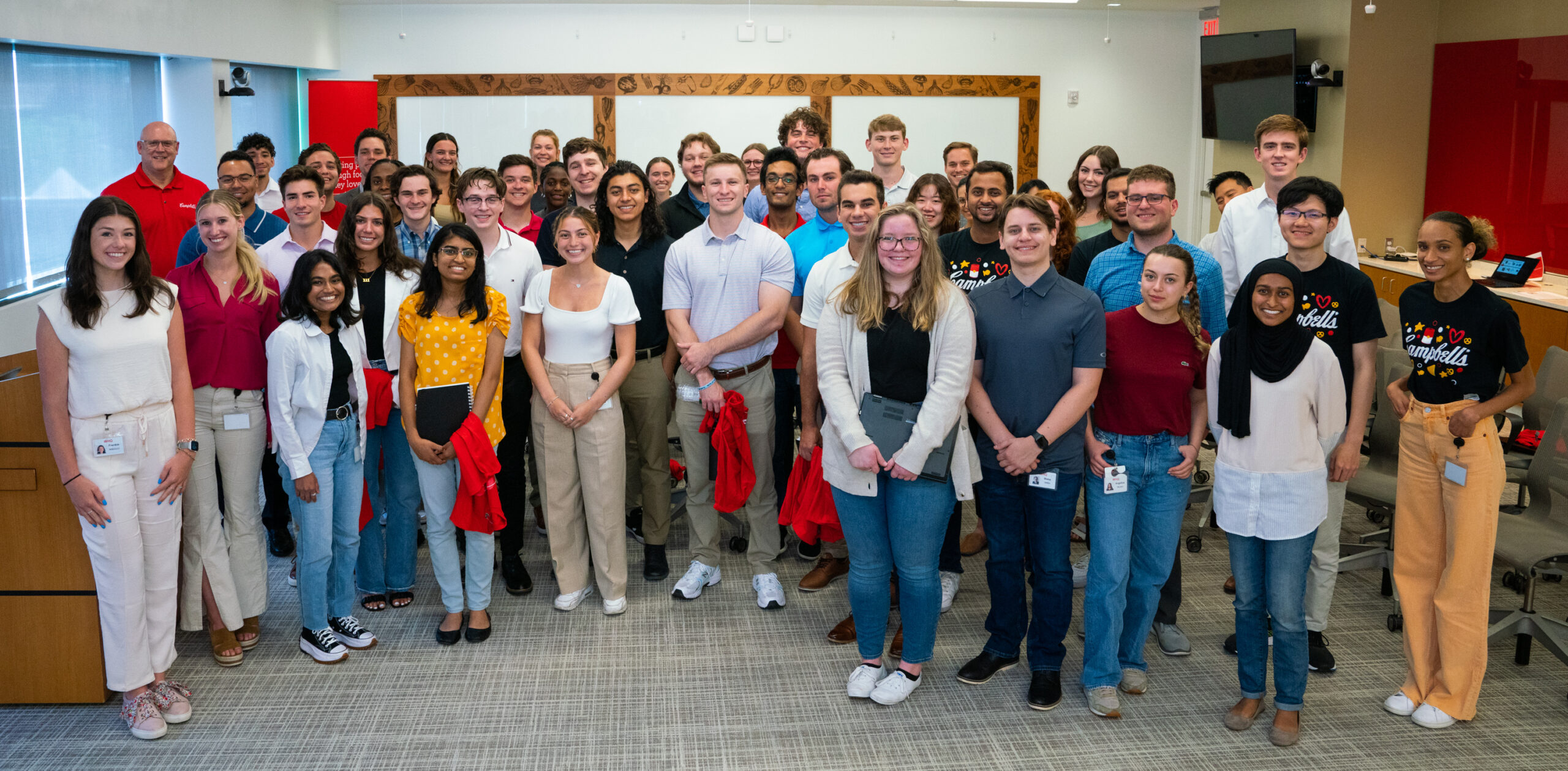
Life at Campbell’s
7 lessons from our leaders
Press Releases
Any Way You Cut It, Pepperidge Farm Bread Makes the Grilled Cheese
Campbell Completes Acquisition of Sovos Brands, Inc.

Grilled Cheese and Tomato Soup Lovers Rejoice! Campbell’s Releases Limited-Time Only Flavor
Campbell Reports Second-Quarter Fiscal 2024 Results
About Campbell’s
Formed in 1869 when fruit merchant Joseph Campbell and commercial canner Abraham Anderson had a simple idea to make food that is good, trusted, and affordable. Over 150 years later, we’re still inspired by our purpose: Connecting people through food they love.
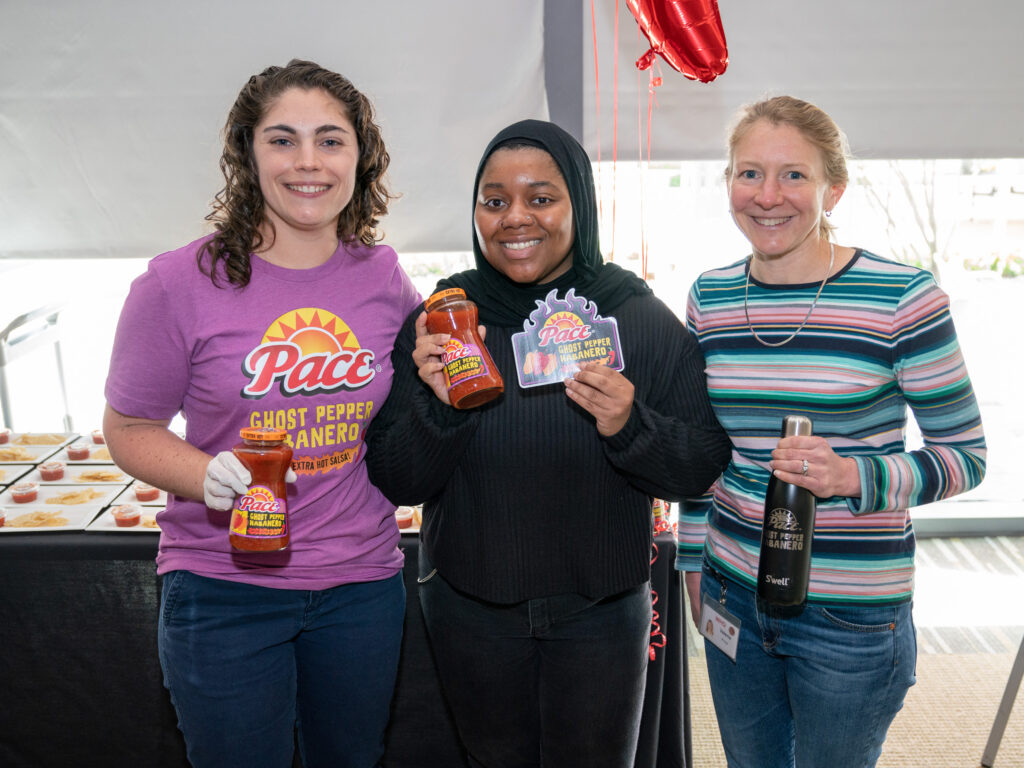
Our purpose

Our leadership team

Join our mailing list
Sign up to get the latest company news. Delivered from our family to yours.
By submitting this form, you agree to receive communications, including product information, from Campbell Soup Company. You may opt out at any time. View our privacy policy .
To manage your email preferences, click here .
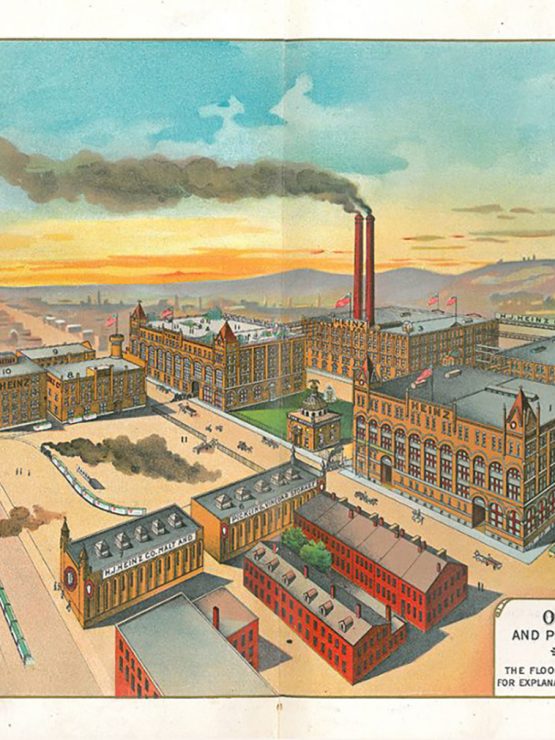
Heinz: First Products and an Innovative Factory
The following post is an excerpt from the new book, 57 Servings From the Heinz Table , by History Center curator Emily Ruby. You can purchase the book from our museum shop or online .
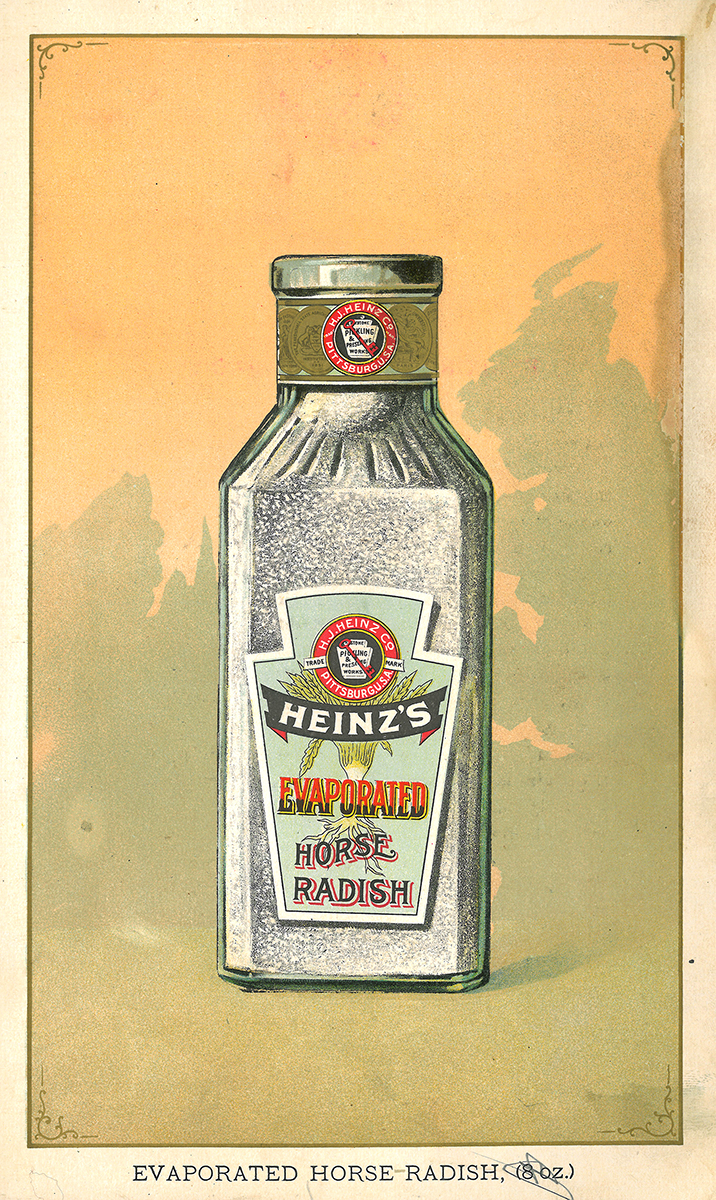
First Product
The very first Heinz product, bottled horseradish, saved homemakers from a thankless but necessary task. The preparation of horseradish as a condiment required long and tedious grating. Heinz believed, from his early experiences, that women would gladly skip the process of grating their own horseradish if they could buy a trusted, packaged product. His hunch proved correct, and the product sold well. He packaged his horseradish in aqua or clear glass so customers could plainly see the quality of the product inside.
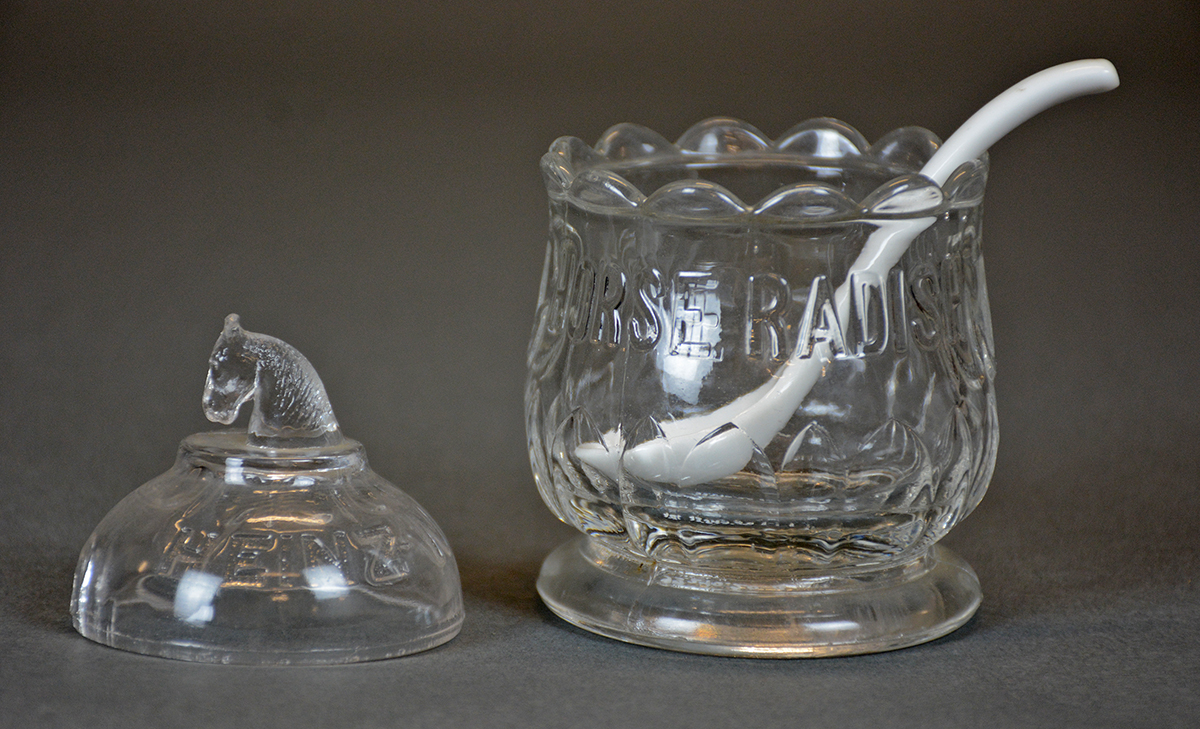
Innovative Factory
By 1898, Heinz’s factory had become the largest food processing facility in the world, built of the finest brick and beautified with stained glass windows. A marvel to visitors, the factory featured all the latest technologies, including one of the first electric ventilation systems in Pittsburgh. Designed to be completely fire resistant, an electric fireproofing system closed doors and sounded fire alarms. Heinz adopted a continuous flow system and assembly line techniques years before industrialists such as Henry Ford created a revolutionary blend of human labor and automation. Many of the first visitors to the site were engineers who traveled from around the world to see Heinz’s plant.
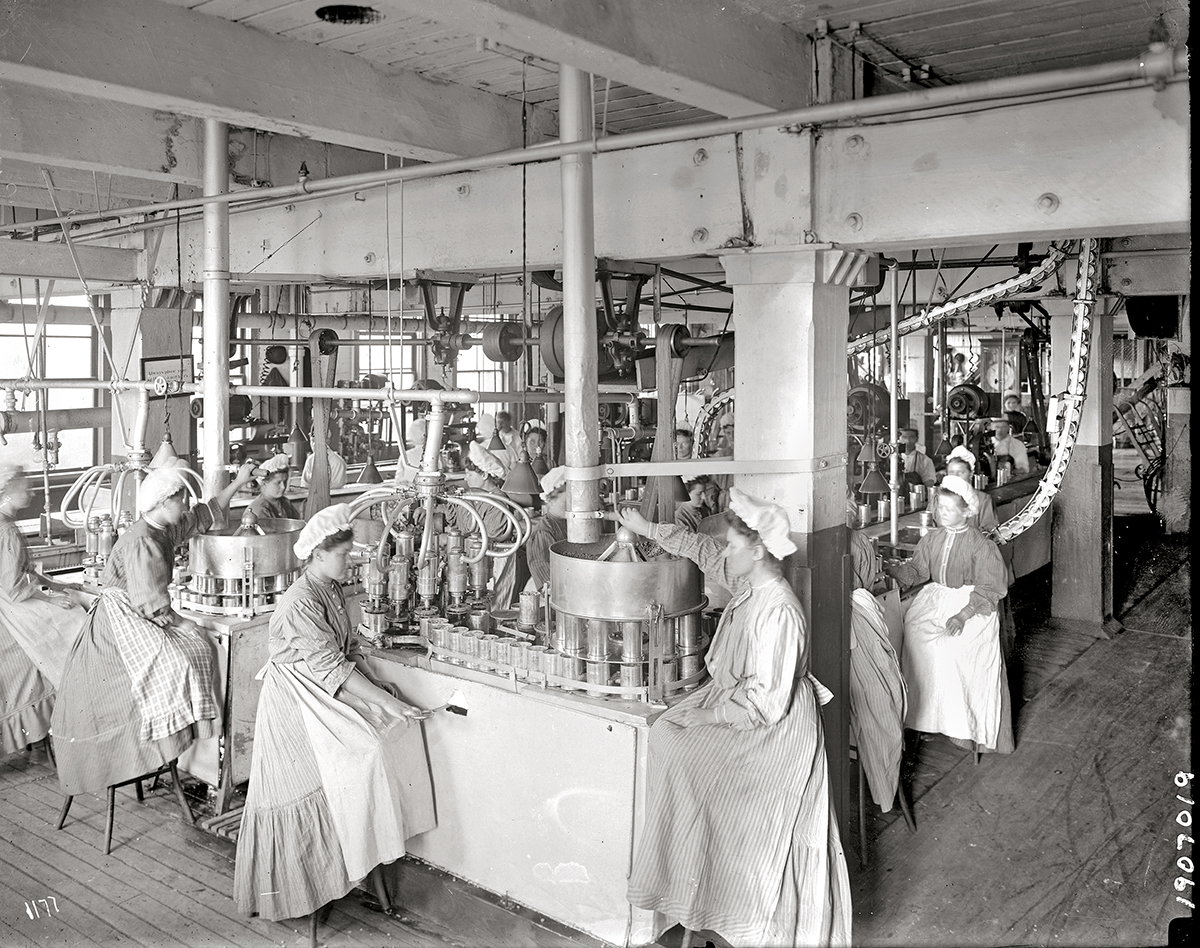
Emily Ruby is a curator at the Heinz History Center, where she oversaw research and interpretation for the new Heinz exhibit. She is the author of the new book, 57 Servings From the Heinz Table , available now.
- Collection Spotlight
- pittsburgh history
- food & drink
- collections

IMAGES
VIDEO
COMMENTS
Heinz History Center Heinz History Center 1212 Smallman Street, Pittsburgh, PA 15222 (412) 454-6000 [email protected] Today's Hours: 10 AM - 5 PM Western Pennsylvania Sports Museum Western Pennsylvania Sports Museum
no. The Heinz History Center has an extremely interesting and thorough exhibit about Heinz Ketchup and other products. I learned a lot and even earned a mini ketchup bottle pin by climbing the stairs to each level! I don't think there's a factory tour anywhere.. the Heinz exhibit is very interesting.
A display of iconic Heinz pickle pins, including the first pin from the 1893 World's Fair in Chicago; Rare artifacts from the History Center's collection, the largest of its kind in the world, including H.J. Heinz's desk set and H.J.'s hand-written ledger, recipe book from 1869, rare memorabilia, and hundreds of Heinz bottles.
Hours and Directions. The Heinz History Center is located at 1212 Smallman St, Pittsburgh, PA 15222. Goal post from Three Rivers Stadium outside the museum. The museum is open 10 a.m. to 5 p.m. daily. There is plenty of Mister Rogers' Neighborhood memorabilia on display at the museum.
The Heinz factory was famous for its cleanliness. In fact, Henry insisted upon it throughout the entire plant. Women were supplied with uniforms. There were showers and changing rooms on the premises for employees to use. Tours. In 1899 Heinz invented the "factory tour" himself. This allowed people to watch the process of making his products.
Full View. Senator John Heinz History Center. 1212 Smallman St.Pittsburgh, Pennsylvania 15222. (412) 454-6000. Fax. (412) 454-6031. Adult Admission. $18 ($9 students) Child Admission.
It is way more than just Heinz Ketchup, in fact just a small section is ketchup. The rest is amazing, interactive sports exhibits, a section dedicated to Mister Rogers and way more to explore. ... No factory tour, but a whole room dedicated to Heinz ketchup, pickles and more. It is cool. Read all replies. 78traveler. NJ 63 contributions.
Senator John Heinz History Center is a museum and research center that showcases the rich history and culture of Pittsburgh and Western Pennsylvania. You can explore six floors of exhibits, ranging from sports and pop culture to immigration and industry. Learn about the lives and legacies of influential figures like Heinz, Carnegie, and Warhol, and discover how Pittsburgh shaped the nation and ...
For the full story of just how our proudest tomato-based export became the global juggernaut that it is, head to the Sen. John Heinz History Center (appropriately enough), where a new-and-improved Heinz exhibition opened to the public on Sept. 6. The exhibit offers a full history of the brand, dating to Henry J. Heinz's family garden in the ...
Trolley sign advertising the Heinz factory tour (c. 1910)Original Source: Heinz History Center Museum Collections Trolley sign advertising the Heinz factory tour, c. 1910 A revolutionary concept in public relations, visitors were able to see Heinz food products being manufactured, from the can-making department to soup-filling machines to ...
Heinz History Center Heinz History Center 1212 Smallman Street, Pittsburgh, PA 15222 (412) 454-6000 [email protected] Today's Hours: 10 AM - 5 PM Western Pennsylvania Sports Museum Western Pennsylvania Sports Museum
We have ketchup with burgers, fries, and just about anything that we can think of to complement our meals. Heinz is the ketchup market leader in the U.S. and sells over 650 million bottles of ketchup around the world every year. Let's take a tour of the Heinz European factory in Elst, Netherlands to see how the world-famous condiment is made.
This Heinz Factory Tour shows you how they pick tomatoes and how they manufacture products such as their famous ketchup and also spaghetti sauce. In the first video, you'll learn a little bit of history - the Heinz perspective on agriculture to the philosophy of continuous flow, which they adopted soon after they began manufacturing ketchup ...
By the early 20th century, Heinz Ketchup was a staple in American households. The iconic glass bottle with its octagonal shape was introduced in 1889 and became a hallmark of Heinz Ketchup. Despite changes in packaging over the years, the octagonal bottle remains a symbol of the brand's heritage and commitment to quality.
Perm. Sergei Gribushin House. Built at turn of 20th century by Alexander Turchasov. Referred to in Boris Pasternak's Doctor Zhivago as the "house with statues". August 23, 1999. William Brumfield ...
A Platform for Performance. The Kraft Heinz Company is the third-largest food and beverage company in North America and the fifth-largest food and beverage company in the world, with eight $1 billion+ brands. A globally trusted producer of delicious foods, The Kraft Heinz Company provides high quality, great taste and nutrition for all eating ...
After the Printing Factory was moved to Perm many workers including those sent to Perm from Moscow remained at the Factory. In spite of the end of the war, the working schedule at the Factory remained tough: right after the war preparation to the currency reform of 1947 was started. The Factory worked day and night, with prolonged working days.
Formed in 1869 when fruit merchant Joseph Campbell and commercial canner Abraham Anderson had a simple idea to make food that is good, trusted, and affordable. Over 150 years later, we're still inspired by our purpose: Connecting people through food they love. learn about us.
Good Day. We at Heinz Customer Care would like to thank you for taking the time to contact us. Rest assured your query will be forwarded to our Head Office and to the relevant factory for further assistance. Your reference as discussed with our consultant: 17-01-100. Kind Regards.
Innovative Factory. By 1898, Heinz's factory had become the largest food processing facility in the world, built of the finest brick and beautified with stained glass windows. A marvel to visitors, the factory featured all the latest technologies, including one of the first electric ventilation systems in Pittsburgh.